
The Rise and Fall of American Growth: The U.S. Standard of Living Since the Civil War (The Princeton Economic History of the Western World)
by
Robert J. Gordon
Published 12 Jan 2016
Many sources of the higher standard of living are not included in GDP at all, starting with the enormous advance in the quality of housing represented by the replacement of outhouses by indoor plumbing and the replacement of wood fires and potbelly stoves by central heating. The invention of the antibiotic penicillin might save thousands of lives, each of great value, but the GDP statistics would record only the expenses of the labor and equipment used in its discovery and production. Other similar examples include Pasteur’s germ theory of disease and the attendant emphasis on soap and cleanliness, the development of urban sanitation infrastructure that made indoor plumbing possible, and the realization in the late nineteenth century that some food being sold was tainted, adulterated, or diluted.
…
A continuing theme of this chapter is what the households of 1870 “did without”—that is, those major sources of improved living standards that were invented and developed over the subsequent seven decades, between 1870 and 1940. The share of homes that had electricity in 1870 was exactly zero. The share of central heating and indoor plumbing was very close to zero. For instance, the hot water radiator was invented only in the late 1850s, implying that there was little central heating in 1870.39 The lack of central heating meant that a fuel, whether wood or coal, had to be hauled into the dwelling unit and the ashes removed. Despite all the work that this hauling entailed, the dwellings of 1870 remained cold in the winter.
…
Unless home-grown, fruit was all but unavailable except during the summer months, and vegetables available in the winter were limited to a few root vegetables that could be stored. Clothing was crude and, for most women, home-made, and the labor needed to create clothing before the invention of the sewing machine created a further burden for the rural and urban housewife. Dwelling units in 1870 universally lacked indoor plumbing, running water, waste disposal, electricity, telephone, and central heating. Although middle-class and upper-class families built homes in cities and nearby suburbs that today constitute cities’ historic districts, farmers and members of the urban working class faced much more difficult living conditions.
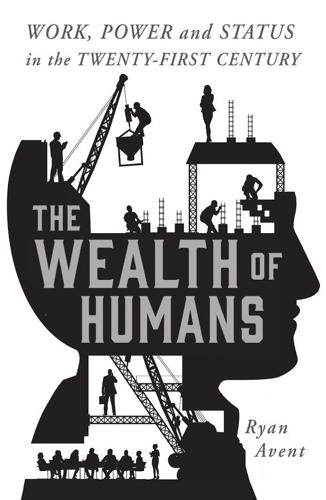
The Wealth of Humans: Work, Power, and Status in the Twenty-First Century
by
Ryan Avent
Published 20 Sep 2016
In the 2000s Robert Gordon began posing a thought experiment to his audiences: would they, he wondered, prefer a world with all the available technology up to 2000, or one with all available technology up to the present day except for indoor plumbing? His little test effectively made the point that what occurred in the second industrial revolution was powerfully transformative, in a way the advances of the internet age simply weren’t. Google is grand, but it’s not as transformative as running hot water. What I like about this thought experiment, however, is that it unintentionally also makes the contrary argument. When Gordon began posing this question in his papers, the answer was so clearly the option with indoor plumbing as to make the question something of a joke – which is what Gordon intended.
…
Technological progress peaked during a period from the late nineteenth century to the mid twentieth century, they assert, an era sometimes called the ‘second industrial revolution’ (the first having been the initial factory boom in Britain, built on the taming of steam power). This second revolution wrought fundamental changes in the world: fantastic, one-off transformations that can’t be repeated. It was during this period that rich economies became electrified. This was the era in which modern sanitation and indoor plumbing were developed, and in which cities grew to truly modern size, in scale and population. It was the period that gave us what are still today the most advanced personal mobility technologies: the automobile and the airplane. It was this period that made the modern world what it is. It was also the era in which the modern job evolved: shaped by the rise of the factory economy, by unionization and the political mobilization of the working class, and by the construction of a social safety net.
…
When Gordon began posing this question in his papers, the answer was so clearly the option with indoor plumbing as to make the question something of a joke – which is what Gordon intended. But with each year that passes, the choice becomes less clear. For many people in developing economies, a smartphone is obviously more important than indoor plumbing: the latter is nice, but the former provides an invaluable economic and social link to the global economy. Meanwhile, in rich countries, smartphone culture is now so deeply entrenched that people might (might!), if forced to make the choice, give up their toilet in order to keep hold of their phone. Nor are smartphones the beginning and end to the contributions of the digital revolution; amputees in possession of thought-controlled prosthetic arms could explain to Gordon that recent advances go well beyond social networks and dating apps.
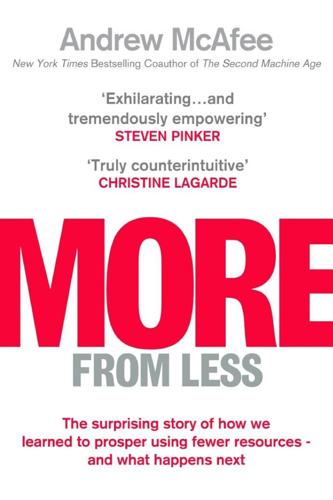
More From Less: The Surprising Story of How We Learned to Prosper Using Fewer Resources – and What Happens Next
by
Andrew McAfee
Published 30 Sep 2019
It lit homes, sidewalks, and streets; saved labor by powering vacuum cleaners, washing machines, dishwashers, and dryers; kept food fresh via refrigeration; allowed cities to grow vertically by powering skyscrapers’ elevators; and enabled countless other transformations. And internal combustion’s impact certainly didn’t stop at motorcycles. Engines that converted petroleum products into mechanical energy were quickly deployed in everything from cars to airplanes to ships to tractors to chain saws. Growing with the Flow: Indoor Plumbing To some, indoor plumbing might not seem a profound enough innovation to stand alongside electricity and internal combustion. A flush toilet and water on demand out of a tap are certainly convenient, but are they fundamentally important to the story of twentieth-century growth? They absolutely are. Health researchers David Cutler and Grant Miller estimate that the availability of clean water explains fully half of the total decline in the overall US mortality rate between 1900 and 1936, and 75 percent of the decline in infant mortality.
…
In the West, after climbing 120 points in the century preceding 1900 to reach a level of 170 points, Morris’s social development index then climbed another 736 points by 2000.VIII Western and Eastern Social Development, 2000 BCE–2000 CE These huge gains were achieved in large part by adding three more world-altering technologies to the mix: the internal combustion engine, electrical power, and indoor plumbing. The first two expanded on what steam gave us: the ability to generate and effectively wield massive amounts of power. The third expanded on London’s triumph over cholera and let us live longer and healthier lives, especially in the densely populated cities that became ever more common around the world.
…
Bringing enough water to run a household from a remote well each day was a staggering amount of work that often fell to women and children, since men typically worked outside the home all day. For example, in Texas’s Hill Country the typical well was located so far from the house that bringing water required more than five hundred hours of labor and 1,750 miles of walking each year.IX Electricity and indoor plumbing eliminated this constant toil. In the 1930s a Tennessee farmer summarized the immense value of the technologies of the second century of the Industrial Era: “The greatest thing on earth is to have the love of God in your heart, and the next greatest thing is to have electricity in your house.”

The Great Stagnation
by
Tyler Cowen
Published 24 Jan 2011
Taking in these workers, and letting them cultivate the land, was like plucking low-hanging fruit. 2. Technological breakthroughs The period from 1880 to 1940 brought numerous major technological advances into our lives. The long list of new developments includes electricity, electric lights, powerful motors, automobiles, airplanes, household appliances, the telephone, indoor plumbing, pharmaceuticals, mass production, the typewriter, the tape recorder, the phonograph, and radio, to name just a few, with television coming at the end of that period. The railroad and fast international ships were not completely new, but they expanded rapidly during this period, tying together the world economy.
…
It’s a long, tough slog with difficult obstacles along the way and highly uncertain returns. A lot of the growth of the United States, up through the 1970s or so, has been based on these three forms of low-hanging fruit. Each of them is pretty much gone today. We still have electricity and indoor plumbing, but most people already use them and we take their advantages, economic and otherwise, for granted. The problem is not that we are likely to regress, but rather where the future growth in living standards will come from. It’s harder to bring additional gains than it used to be. You might be thinking that Americans have enjoyed more forms of low-hanging fruit than those I have listed.

Valley So Low: One Lawyer's Fight for Justice in the Wake of America's Great Coal Catastrophe
by
Jared Sullivan
Published 15 Oct 2024
He grew up outside town on a fifteen-acre farm with his mom, dad, and five siblings. As a boy, he spent his free time in the woods, climbing trees and running around with his beagles. Money was tight. His family butchered their own sheep, rabbits, and chickens, and their farmhouse had neither indoor plumbing nor electric heat. Ansol and his twin brother, Edsol, chopped firewood all summer to stock up for winter. Once a year, their father would sell some cattle for extra cash, then pile the family into a 1957 Chevrolet and strike out for the Great Smoky Mountains National Park, forty miles southeast of Knoxville.
…
In the mountains, families survived in crude shacks clustered along creek bottoms or hillsides, walls plastered with newspaper and flour paste to keep out winter’s cold. Relatives slept three or four to a bed. Babies died of “summer complaint”—diarrhea or heat exposure or some combination of both. People caught typhoid from drinking bad water. Malaria was endemic. Three-quarters of homes lacked indoor plumbing. The Tennessee River, wild and almost unnavigable, regularly brought catastrophe. In 1867, the river rose fifty-eight feet above its normal level, drowning the city of Chattanooga in eight feet of water and leaving bodies littering the streets. Industry was almost nonexistent outside a few cities.
…
The nurses explained that, once they began shutting off the ventilator and the other machines that sustained him, he would exhale a final time, then breathe no more. Ansol did just as the nurses promised. Ansol Dwain Clark died on May 1, 2021, twelve years, four months, and nine days after the December morning he responded to the Kingston spill. He was seventy years old. He had grown up on a farm without indoor plumbing, served his country during wartime, married the woman he loved, raised a son, built a home, joined a union, and took action when a disaster visited his community. He was a good man, by all accounts. The Kingston workers had a private Facebook page where they shared news and case updates. The day after Ansol’s death, Bergan posted a photo of his father.

Discardia: More Life, Less Stuff
by
Dinah Sanders
Published 7 Oct 2011
Get some perspective. A lot of things that may aggravate you only do so because you have the luxury of not wrestling with bigger issues. Today, be thankful for everything you have: being alive, your friends and family, your health, a roof over your head, something to eat, clean water to drink, indoor plumbing, heating, air conditioning, clothes, shoes, a job, and freedoms. Many, many people have it worse. Bad drivers in front of you or annoying coworkers or technical difficulties aren't that important in the grand scheme of things. Yeah, okay, they’re irritating, but are they important? No, not really.
…
After I visited the home of a woman named Miriam in an informal settlement in Soweto, and chatted with her as she cooked on a paraffin stove in her two-room, jury-rigged shack, the quantity of stuff in my apartment alarmed me. Miriam didn't have many things, but everything in her possession had a purpose. Her home was painfully simple—and I hope that she realized her dream of moving into a more solid home with indoor plumbing—but she had put her heart into it and made it clean and cheerful. She crafted her wallpaper from bright green wrappers from a household product and painted the exterior brightly. She swept the dirt floor scrupulously and a few plants were growing in her yard. After visiting Miriam's house, a girl's orphanage near Nairobi, and a Maasai village, it was very clear to me that it is not the number or newness of possessions that make a happy home.
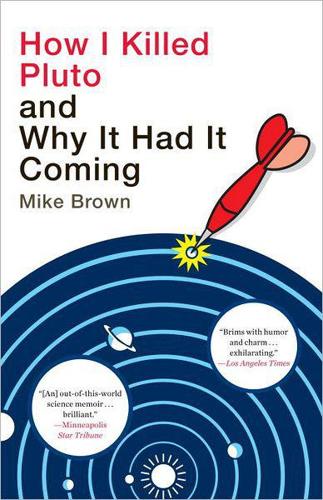
How I Killed Pluto and Why It Had It Coming
by
Mike Brown
Published 7 Dec 2010
If Ceres was to be thought of as just the largest of the vast collection of asteroids and thus not a planet, why should Pluto not suffer the same fate? What, after all, was a planet? Chapter Three THE MOON IS MY NEMESIS When I first started looking for planets, I lived in a little cabin in the mountains above Pasadena. I have a feeling I was the only professor at Caltech at the time who lacked indoor plumbing and instead used an outhouse on a daily (and nightly) basis. I worked long hours, and it was almost always dark, often past midnight, when I made my way back into the mountains to go home for the night. To get to my cabin, I had to drive up the windy mountain road into the forest, past the national forest parking lot, and down to the end of a dirt road, and finally walk along a poorly maintained trail by the side of a seasonal creek.
…
But on days with no moon and no clouds and only the stars and planets to light the way, I would shuffle slowly down the trail knowing that over here—somewhere—was a rock that stuck out—there!—and over here I had to reach out to feel a branch—here! It was a good thing that my skin does not react strongly to the touch of poison oak. These days I live in a more normal suburban setting and drive my car right up to my house. I even have indoor plumbing. The moon has almost no direct effect on my day-to-day life, but still, I consciously track its phases and its location in the sky and try to show my daughter every month when it comes around full. All of this, though, is just because I like the moon and find its motions and shapes fascinating.

$2.00 A Day: Living on Almost Nothing in America
by
Kathryn Edin
and
H. Luke Shaefer
Published 31 Aug 2015
As of 2011, that figure stood at nearly 70 percent. What has caused this ongoing rise in housing costs? Taking the long view, one of the factors driving this trend is the across-the-board improvement in the quality of housing in America. Sixty years ago, lower-end housing was likely to lack such basic amenities as indoor plumbing. Since that time, these features have become standard, even in the cheapest units. This has been a great advancement for our society, but it also means that low-cost housing has become less affordable as a result. Further, families like Jennifer’s are subject to different rules today than they once were.
…
Some of the trucks are shiny and new, others are beat-up and barely running, but they are all full of metal junk of all shapes and sizes. These vehicles wait to deposit their loads into one of several bays, where each item is weighed and its value assessed. This is probably where the lengths of copper piping from Rae McCormick’s basement ended up, leaving the tenants without indoor plumbing. West Side Metals isn’t a place for small-time operators, though, so folks like Paul usually continue south along 65th. On the east side of the street sits a strip mall, formerly anchored by the neighborhood’s Kmart, the very one where Rae worked for several years. Currently, there’s nothing in the massive big-box space, and its signage has been removed.
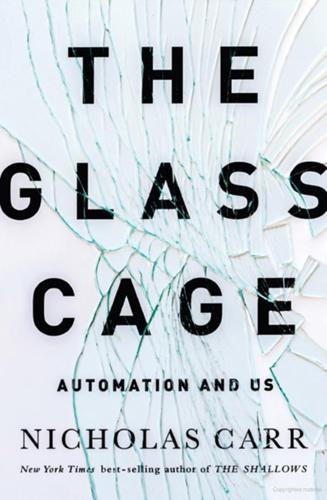
The Glass Cage: Automation and Us
by
Nicholas Carr
Published 28 Sep 2014
The more we habituate ourselves to the technology, the greater the risk grows. It’s one thing for indoor plumbing to become invisible, to fade from our view as we adapt ourselves, happily, to its presence. Even if we’re incapable of fixing a leaky faucet or troubleshooting a balky toilet, we tend to have a pretty good sense of what the pipes in our homes do—and why. Most technologies that have become invisible to us through their ubiquity are like that. Their workings, and the assumptions and interests underlying their workings, are self-evident, or at least discernible. The technologies may have unintended effects—indoor plumbing changed the way people think about hygiene and privacy38—but they rarely have hidden agendas.

The Last Ride of the Pony Express: My 2,000-Mile Horseback Journey Into the Old West
by
Will Grant
Published 14 Oct 2023
All Amish groups adhere to a code of conduct dictated by the Ordnung—the word is German for “order” (the Amish still speak German during Sunday services). There are many subgroups within the Amish faith, and each subgroup determines its own version of the Ordnung, though there is little variance. All groups prohibit owning cars, radios, or televisions. Internet use is rare. Some allow washing machines, chainsaws, and indoor plumbing. A few allow the use of rototillers; fewer allow tractors.13 Most Amish shun modern technology, wear plain clothing, and use horses instead of machinery. Which is to say that the Amish operate a farm in the ways of a bygone era, which Roy Winkler referred to when he said they might have it “figured out.”
…
The wood paneling of the kitchen had been painted lime green some time ago. Dusty articles, pots and pans and tools and more cookery, cluttered the countertops and shelves. The room smelled old. An enameled tin chamber pot sat on the floor with a small piece of paper on it, and on the paper was written “1st indoor plumbing.” A pair of rusted antique ice skates hung from a plastered wall, and a treble hook for curing meat hung from a ceiling beam. Old photographs of family and horses decorated the walls, and on a long table sat a framed certificate complimenting the Bagley family for its preservation of the historic site.
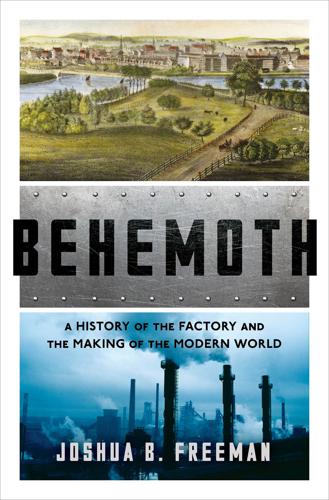
Behemoth: A History of the Factory and the Making of the Modern World
by
Joshua B. Freeman
Published 27 Feb 2018
Civilization meant novels, chess, Beethoven, indoor plumbing, electricity. But some communists, and to some extent the party and state as a whole, at least through the early 1930s, believed that a distinctly communist culture and civilization should be created out of the revolution. The factory was an instrument to realize socialist modernity.50 The simple act of coming to a factory could launch the process of cultural change. This was especially the case for men and women from peasant villages, and even more so for migrants from nomadic regions of the country. Many newcomers had never seen a locomotive, indoor plumbing, electric lights, even a staircase.
…
Rufus Wood, the company executive who designed the town, was the son of a foreman at the Boott cotton mill in Lowell. He modeled Sparrows Point on the Massachusetts city, though with mostly family accommodations rather than boardinghouses. Dwellings ranged in size and quality from an eighteen-room, three-story colonial for Wood himself down to small wooden houses without running water or indoor plumbing for black workers. As in Lowell, elaborate rules governed behavior not only on the job but in the housing, too.46 The most ambitious mill town scheme came in 1895, when the Apollo Iron and Steel Company decided to build a new mill a mile and a half from its existing plant in western Pennsylvania.

Scarcity: The True Cost of Not Having Enough
by
Sendhil Mullainathan
Published 3 Sep 2014
We mean cases of economic scarcity where changing what you want, or think you need, is simply not viable. Some of these hard-to-change needs are biological, such as hunger for the subsistence farmer, and some are socially constructed. What we feel we need depends on what others have and on what we’ve gotten used to. Indoor plumbing, for example, would hardly make anyone in the developed world feel terribly lucky these days, yet it was pretty much inconceivable until the last quarter of the nineteenth century, and it is still a dream in many places today. To the subsistence farmer, it is a luxury; to someone living in New Jersey, it is a necessity.
…
e-mail emergencies hospital empathy bridge employment scarcity work hours entrepreneurship errors pilot slack and everyday life, scarcity in excise taxes executive control exercise experimental psychology expertise Exxon Valdez E-ZPass failure organizational to plan poverty and Family Feud (TV show) farming behavior crop insurance crop yields harvests organic subsistence weeding fatigue fault tolerance Faye, Michael Ferraro, Paul fertilizer financial literacy education firefighting trap fluid intelligence fMRI focus focus dividend food dieting eating while driving fast impulsivity and junk kitchen pantry labels neglect packing prices restaurant scarcity snacks food stamps Ford, Henry 401(k) plan frugality future neglect of game shows gasoline genetics Gennetian, Lisa Germany Gersick, Connie GlowCaps glucocorticoids goal inhibition golf grandparents Great Britain Grondin, Simon guess scarcity Hall, Crystal Handey, Jack Harris, Sandra harvests Hastings, Max Head Start health insurance heart rate Heschel, Abraham Joshua hibachi high school graduates HIV hospitals housing messy Hunton, Brian hyperbolic discounting IFMR Trust impulse control impulse purchases incentives, ineffective India bargaining in poverty street vendors Indonesia indoor plumbing ineffective incentives inefficiency infrastructure inhibition goal Institute for Healthcare Improvement insurance car crop deductibles health unemployment intelligence, fluid interest rates internal disruptions iPhone iPod IQ tests Iron Chef (TV show) Jaikumar, Ramchandran Japan Jenkins, Richard jewel loans Jewish Sabbath Jiaying Zhao juggling junk food Kahneman, Daniel Karlan, Dean Keep the Change program Kenya Killeen, Peter Kimes, Sheryl kitchen pantry Koyambedu vendors Kurtz, Jaime Larson, Dr.
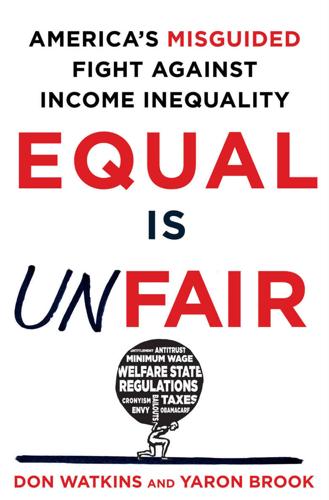
Equal Is Unfair: America's Misguided Fight Against Income Inequality
by
Don Watkins
and
Yaron Brook
Published 28 Mar 2016
Between 1835 and 1935, medicine advanced (anesthesia, antiseptics, insulin, penicillin, and pasteurization were all developed during this era, along with huge improvements in sanitation), transportation was revolutionized (the internal combustion engine spawned trucks, cars, tractors, and airplanes, while steam trains became far safer thanks to the development of the air brake), new means of communication connected the world (telegraph, telephone, radio), and entrepreneurs filled Americans’ homes with electricity, incandescent lighting, sewing machines, washing machines, running water, indoor plumbing, air-conditioning, and a whole lot more. Whatever hardships they continued to face, people were eating better, dressing better, living better. By no means were these improvements reserved for the very wealthy. In 1934, in the depths of the Depression, a survey of Pittsburgh found that . . . even in the poorest districts in the city, 98 percent of the dwellings had running water (only half had hot water), 91 percent had electricity or gas for lighting, 75 percent had indoor water closets, and 54 percent had a shower or bathtub.
…
Experts are in general agreement that the government’s official poverty measure overstates poverty, and that better assessments suggest that poverty has been cut in half over the last fifty years.53 What’s more, most of the people the government classifies as “poor” live relatively comfortable lives. Despite the genuine hardships they face, today’s poor typically enjoy an adequate diet, electricity, indoor plumbing, automobiles, and modern conveniences such as dishwashers, TVs, and DVD players. In fact, the average poor person in America lives in a home that is larger than what the average non-poor person in Europe lives in.54 But we can’t celebrate just yet. Johnson claimed that the goal of the War on Poverty was to give poor Americans “opportunity not doles.”
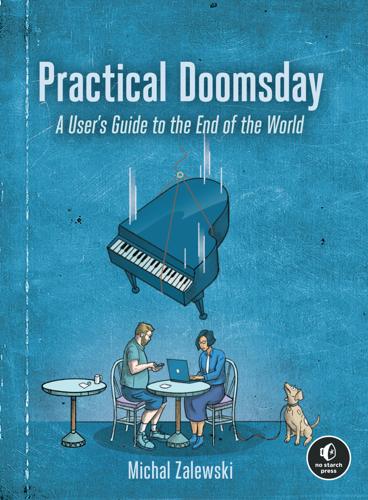
Practical Doomsday: A User's Guide to the End of the World
by
Michal Zalewski
Published 11 Jan 2022
But during a water outage in an urban high-rise, you might end up with a pressing problem in the blink of an eye. Many other household tasks, such as doing laundry or bathing, also get complicated when the taps are dry—and especially for families with young children, can’t be postponed forever. Waste Disposal Although ubiquitous indoor plumbing is a fairly recent development, sustainable methods of sanitary waste disposal have been with us for thousands of years. The solutions varied in complexity and elegance, ranging from regularly emptied communal cesspits to the sophisticated sewer systems of the ancient Greeks—but whatever the method, almost every permanent human settlement went to considerable lengths to keep the problem in check.
…
The glycol depresses the freezing temperature of the mix, making this a worthwhile endeavor in some settings, especially in regions where outdoor temperatures frequently drop below 10°F. Draining the system during prolonged outages may be a last-resort option too—although this takes the heating out of commission until refilled and properly purged of air. Because of the risk to indoor plumbing posed by subfreezing temperatures, it’s good to have alternative sources of heat. Some houses, especially in cold climates, may be equipped with two or more independent heat sources, such as a gas fireplace and electric baseboards. For homes without an adequate backup, inexpensive indoor-safe units, such as the propane-powered Mr.
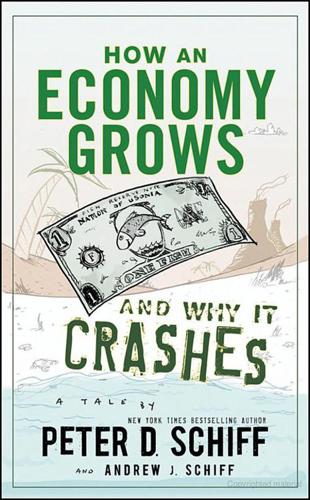
How an Economy Grows and Why It Crashes
by
Peter D. Schiff
and
Andrew J. Schiff
Published 2 May 2010
In a primitive society where little is produced, even the richest can’t match the material well-being available to the poor of an industrialized economy. In the Middle Ages, even the mightiest kings lacked the basic amenities that nearly everyone in the United States now takes for granted… things like central heating, indoor plumbing, and fresh vegetables in the winter. And although Baker and Charlie would imagine that a two-fish-per-day diet was the height of luxury, from our perspective such a lifestyle hardly seems enviable. But the fact that there are degrees of wealth has always struck some as being inherently unfair.

Halting State
by
Charles Stross
Published 9 Jul 2011
“So how about we go someplace where there’s some signal and place some calls?” JACK: Schrödinger’s Girl You emerge from the depths of Bannerman’s blinking like a hung-over bat, and glance up and down the canyonlike length of the Cowgate. Someplace where there’s some signal indeed: The stone tenements to either side are nine stories high, and they predate lifts and indoor plumbing. Michaels spots an on-coming taxi (subtype: one with a human driver) and flags it down without waiting for you, so you glance over your shoulder at Elaine, who is glaring at her mobile and fuming. “Come on, let’s take a walk,” you propose. “We’ve got work to be doing,” she points out. “Well, the hotel is about a mile and a half that way”—you point along the canyon towards the Grassmarket and beyond, in the direction of Tollcross or maybe the West End—“and we need to talk.
…
You can discount face recognition, despite all those cameras surreptitiously filing away your misdemeanours for later (like back when you were fifteen and stupid) because it’s CPU-intensive as hell, but your mobie is a tracking device par excellence, and you’ve got to assume that Team Red know who you both are, by now. “Let’s stay off-line until we get to the hotel.” By which point, Team Red won’t have a fucking clue where you are, which is exactly how you want things to be. “I hate being lost,” she mutters. “Really?” You’re taken aback. “It used to be normal.” “Lots of things used to be normal. No indoor plumbing and dying in child-birth used to be normal. Where are we?” “We’re on, um, the road that leads from the Grassmarket to Lothian Road, dammit. I can’t remember.” It’s an itch you can’t scratch, like not being able to check a watch or pull up the news headlines. “Just think, it used to be like this for everybody, just twenty years ago!”

We Are All Fast-Food Workers Now: The Global Uprising Against Poverty Wages
by
Annelise Orleck
Published 27 Feb 2018
Barbed-wire enclosures dot the Cavite and Bataan Peninsulas, the jaws of land that enclose Manila harbor. Where Japanese prisoner of war camps stood, there are now barracks of a different sort. Worker dormitories line the alleyways of the Mariveles and Cavite Export Processing Zones—semi-hidden, overcrowded, without light, privacy, and, often, even indoor plumbing. The air in these zones is thick with fumes from factories owned by Japanese, Korean, Chinese, and Philippine corporations. The Spanish fast-fashion giant Inditex has factories here too. But most of the clothing made here is for American companies, says garment union organizer Asuncion Binos.
…
A sympathetic executive at Barnes & Noble, operator of college bookstores across the country, carried and promoted the product. By 2016, Alta Gracia was providing logo-wear for eight hundred US colleges and universities and moving into the black financially. For the first time, its workers had indoor plumbing, electricity, healthcare, and the chance to finish high school and attend college. Said one worker, “This has allowed us to dream.” Opening a unionized garment shop with a livable wage and decent conditions was unprecedented in the modern global apparel trade, says Scott Nova, founder and director of the Worker Rights Consortium.

White Trash: The 400-Year Untold History of Class in America
by
Nancy Isenberg
Published 20 Jun 2016
Here, federal housing revolutionized methods of prefabrication, laying a strong foundation for the growth of suburbia in the aftermath of World War II. However, the federal government could not bridge the North-South divide when it came to standards of public rural housing; southern projects were administered by southerners who were loath to spend on amenities—such as indoor plumbing. Will Alexander, the Missourian who replaced Tugwell at the RA, and then took over at the FSA, remarked on the persistence of southern backwardness: “If we could house all our low-income farm families with the same standards Danes use for their hogs, we would be a long step ahead.” Southern politicians shortchanged rural Americans in another crucial way: they made sure that the New Deal’s signature Social Security program excluded farm laborers.43 Tugwell’s tenure at the RA was short—just one year—but his influence lingered.
…
Her father was a disabled veteran, unable to work; her mother held a job at the Westinghouse plant. They had left the small rural town of Redfield in 1951, when Hazel was ten. Her mother had married at fourteen to a man twice her age. Neither of Hazel’s parents had earned a high school degree, her father having joined the circus. Their Redfield home had had no indoor plumbing and an outdoor privy; the Bryans’ move to the city granted basic amenities that they had not enjoyed before. The house they purchased in Little Rock was in an all-white, working-class neighborhood in the southeastern section of the state capital.43 Hazel Bryan is the ugly face of white trash in Will Counts’s famous photograph taken on September 4, 1957.
…
Critics of evangelical hypocrisy vented their rage, and one outraged editorialist attacked President Reagan himself for bringing “white trash front and center” when he entertained Bakker and other televangelists at the White House and told Americans they could learn from them about “traditional American values.” The Bakkers appeared on television day and night, “dressed like pimps,” massacring the English language and defiling religion.40 The Bakkers were not even native to the South. Tammy Faye was born into a poor family of eight children in a small rural town in Minnesota, in a house without indoor plumbing. Her parents were Pentecostal preachers. Jim, the son of a machinist, came from Michigan. They relocated to North Carolina because it was where they knew a market existed for their Pentecostal religious message. Tammy Faye was the charismatic heart of the show, singing, crying, and thriving on her gaudy reputation, “à la Liberace,” as one religious scholar has concluded.

Weimar Culture: The Outsider as Insider
by
Weimar Gay
Published 31 Dec 2001
It was a nondenominational church. 304 Some of the men and women in my neighborhood had lived part of their childhood on the outskirts of cotton towns in tents provided by the federal Farm Security Administration. Some had lived in tarpaper shacks among the oil fields outside of Bakersfield. The shacks didn’t have indoor plumbing. Some had been the first of their family to graduate from high school. Okies who grew up in California learned to hide their border state twang. Sometimes, it would reappear after a few drinks among the couples my parents invited over to watch television or play cards. Some of the couples gave up their Pentecostal religion for milder forms of faith.

Lonely Planet Pocket Berlin
by
Lonely Planet
and
Andrea Schulte-Peevers
Published 31 Aug 2012
Tipping › Restaurant bills almost always include Bedienung (service charge) but most people add 5% or 10% unless service was truly abhorrent. › At hotels, porters get €1 or €2 per bag; it’s also nice to leave some cash for the room cleaners. › Tip bartenders about 5% and taxi drivers about 10%. Toilets Top Tip Guys can have a quaint pee in the octagonal Christmas-tree-green pissoirs that are vestiges from the 19th century when indoor plumbing was not yet commonplace. › Free-standing public pay toilets are scattered throughout central Berlin. › Toilets in malls, department stores, public venues, cafe and restaurant are often attended by cleaners who either request a small fee (usually €0.50) or expect a small tip. Dos & Don’ts › Do say ‘Guten Tag’ when entering a business. › Do state your last name at the start of a phone call. › Do bring a small gift or flowers when invited to a meal. › Do bag your own groceries in supermarkets.

A Few Red Drops: The Chicago Race Riot of 1919
by
Claire Hartfield
Published 1 Jan 2017
At last, the streetcar reached the southern edge of the Black Belt, where well-kept lawns and modest gardens adorned streets lined with wooden frame homes, most of which had been divided into two or more comfortably sized apartments. The small businessmen, government workers, and artisans who lived here could not afford the mansions of the Refined, but most of their homes were equipped with indoor plumbing, electric lights, and gas for cooking. Jesse Binga Bank. Mixed throughout were the suppliers of goods, services, and fellowship for the diverse black community. Ferdinand Barnett and other black lawyers and doctors hung out their shingles. Opened in 1908, the black-owned three-story redbrick Jesse Binga Bank was always bustling with customers who appreciated the courteous manner of the clerks and the availability of loans that the downtown banks were unlikely to approve for blacks.
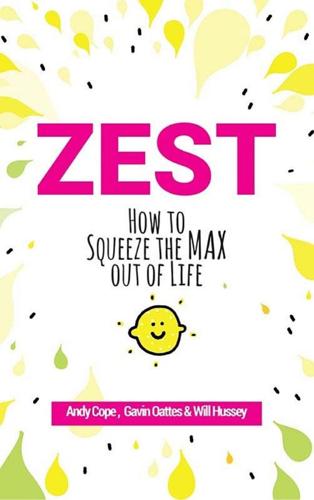
Zest: How to Squeeze the Max Out of Life
by
Andy Cope
,
Gavin Oattes
and
Will Hussey
Published 19 Jul 2019
Death often came well before retirement. And women? Three generations ago, by and large, they weren’t employed. Your great-great-grandma didn’t have time, what with all the raising of your great-grandma and her six siblings. There were clear roles and societal structures. With no central heating and very little indoor plumbing, life was tough. Imagine, they didn’t even have coffee. Or electricity. Or supermarkets. Or pizzas. Look around at the world today. Gosh! Modernity. We have no desire to do away with our comfy central-heated ensuite bathroom’d fully carpeted homes, or to hark back to the ‘good old days’ of rickets and diphtheria.
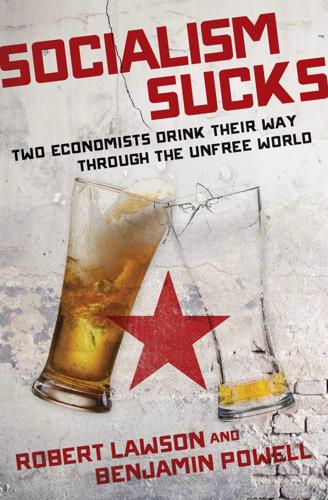
Socialism Sucks: Two Economists Drink Their Way Through the Unfree World
by
Robert Lawson
and
Benjamin Powell
Published 29 Jul 2019
The bathroom, however, was the real gem. One of the metal ceiling panels was missing; there was mold everywhere; and, as we’d find out the next morning, running water was not guaranteed. Bob and I have hiked many mountains together, and we’ve spent plenty of nights sleeping on the ground. We’ve definitely gone without indoor plumbing. This was nothing we couldn’t handle. We decided to go relax at the pool. Luckily, we caught the elevator as it rumbled to a stop at our floor. It was stuffed with people and their belongings, and as we squeezed in, I had some idea of what it would feel like to leave Cuba by boat. The pool wasn’t any better.

Worn: A People's History of Clothing
by
Sofi Thanhauser
Published 25 Jan 2022
An inventory drawn up by the meticulous Mme de Schomberg in the 1760s listing all the items of her wardrobe showed she owned a great deal of underlinen: underskirts, shirts, mantles (nightgowns), mantelets (short, sleeveless capes), furbelows (flounces to adorn an underskirt), caps, cuffs, stockings formed her arsenal of lingerie. The rise of modern-day underwear awaited indoor plumbing: the threat of thrush, which warmth invites, discouraged women from wearing a garment close in against her crotch until regular bathing and laundering were possible. Women in Europe and America wore, rather, long skirts with petticoats right up into the early twentieth century. Knickers, or drawers, had been worn occasionally since the fifteenth century by upper-class women in Europe, though the vogue largely died out by the seventeenth century.
…
After a reflective pause, Edwin replied, “I guess he ran out of things to do.” We drove past the house Edwin lived in when he and his wife were first married. It was a beautiful worn thing with a porch facing out onto a cotton field. We passed another worn ranch on the edge of a field of cotton. This one was the house where Edwin was raised, with no indoor plumbing and no electricity. “Spanish people,” what he calls the laborers, live there now, he says. Cotton farms consolidated as their technology mechanized in the twentieth century, and the Lubbock cotton elite moved up significantly. After our visit to his son’s acreage, and our drive-by tour of the old homestead, Edwin and I headed over to the development where he and his wife, Linda, had since moved.

Apocalypse Never: Why Environmental Alarmism Hurts Us All
by
Michael Shellenberger
Published 28 Jun 2020
“Strong and direct connections can be drawn between [Malthus’s] work,” historian Mayhew concludes, “and some of the most abhorrent moments in twentieth-century history.”56 In the early twentieth century, the Tennessee Valley region of the United States was a lot like the Congo today. Deforestation was rising. Agricultural yields were declining due to soil erosion. Malaria plagued the region. Few had adequate medical care. Fewer had indoor plumbing or electricity. World War I brought hope to the region. Congress authorized the construction of a dam on the Tennessee River to power a munitions factory. But the war ended before the dam could be finished. Henry Ford offered to buy the complex for $5 million, but taxpayers had already sunk more than $40 million into the project, leading George Norris, a progressive Republican senator, to oppose Ford’s offer.
…
In 1930, forty-two-year-old Rhodes scholar and Tennessee poet John Crowe Ransom wrote in the opening essay in a famous collection, I’ll Take My Stand, “the latter-day societies have been seized—none quite so violently as our American one—with the strange idea that the human destiny is not to secure an honorable peace with nature, but to wage an unrelenting war on nature.”58 Ransom and the other “Southern Agrarians” disparaged cities and industry for their impact on the environment and on people. They declared farm machinery, paved roads, and indoor plumbing as part of the “disease of modern industrial civilization.” Ransom’s perspective as a poet at Vanderbilt University was quite different from the one of the poor sharecroppers. The people of the Tennessee Valley region who suffered from malaria and hunger likely might have disagreed with the view that they had been living at peace with nature.

Open: The Story of Human Progress
by
Johan Norberg
Published 14 Sep 2020
The darkening age Many in the West have tried to tell the story of the modern world as the fulfilment of European destiny – some sort of steady advance from Athens to Rome, and onwards to the Renaissance, the scientific and Industrial Revolution, until suddenly here we are with modernity and indoor plumbing. It is understandable. Since ancient Greek thought was so revolutionary, and since it took place where East met West, any civilization that made the final leap to wealth and freedom could think of Athens as the great predecessor. But the narrative is not just simplified; it is false. Science and progress do not follow a simple trajectory.
…
So if one of them went for a meal in a respectable home or establishment, the others had to stay home. Now most of us even have servants who wash our clothes – they’re called washing machines. Even though Bezos can easily afford several mansions, the rest of us don’t have to settle for homes without insulation, electricity and indoor plumbing any more. Homes used to be so poor in quality that ‘house breaking’ by burglars was a literal activity. Typical habitations were so infested by dirt and vermin that a historian said that from a health point of view the only good thing was that they burned down easily. Our kids have almost the same chance to learn to read and write as Bezos’ kids, and to survive until retirement.
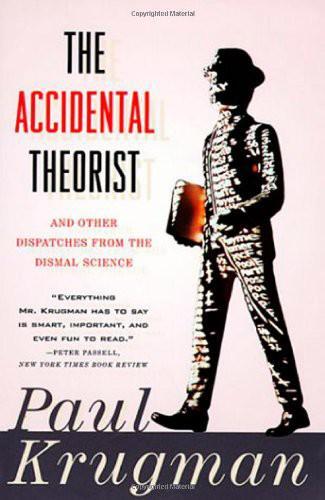
The Accidental Theorist: And Other Dispatches From the Dismal Science
by
Paul Krugman
Published 18 Feb 2010
Families at the twentieth percentile—that is, poorer than 80 percent of the population—may not be legally poor (only about 12 percent of families are officially below the poverty line), but they are likely to regard themselves as very disadvantaged and unsuccessful. So even using the old numbers, most families in 1950 had a material standard of living no better than that of today’s poor or near-poor. We can confirm this with more direct measures of the way people lived. In 1950 some 35 percent of dwellings lacked full indoor plumbing. Many families still did not have telephones or cars. And of course very few people had televisions. A modern American family at the twelfth percentile (that is, right at the poverty line) surely has a flushing toilet, a working shower, and a telephone with direct-dial long-distance service; probably has a color television; and may well even have a car.

The Rules Do Not Apply
by
Ariel Levy
Published 14 Mar 2017
There was a runner from Limpopo, a rural region of South Africa on the borders of Botswana, Mozambique, and Zimbabwe, whose picture I had seen in the paper and could not look away from. Her name was Caster Semenya. She had grown up in a remote village of small brick houses and sun-baked mud-and-dung huts, running barefoot with a track team that could not afford sneakers. She came from a place where few people had cars or indoor plumbing or opportunities for greatness, and she had kept on running until she was powerful and unstoppable. Semenya had been recruited by the University of Pretoria and, at eighteen, she had just won the 2009 World Championships in Berlin, setting a new national record for her event. She seemed destined for the Olympics.

The Scandal of Money
by
George Gilder
Published 23 Feb 2016
The critics of the dream rest their case on a detailed account of the overwhelming and singular transformative power of what they dub “the second industrial revolution” beginning about 1890 (following the first revolution of steam engines, coal, gas lighting, and metals a century earlier). From cars and planes and central heating and indoor plumbing to antibiotics and air conditioners and telegraphs, technological progress doubled life spans, accelerated transport from five miles an hour to five hundred miles an hour, and reduced communications delays from days to seconds. Overall measured productivity rose a hundredfold and growth rates surged.

More: The 10,000-Year Rise of the World Economy
by
Philip Coggan
Published 6 Feb 2020
As the European economies gathered speed in the 1950s, they were able to make enormous productivity gains as they caught up with American technology and methods; West Germany averaged 6.4% per year in the decade, Italy 5.9%, and France 4.3%.13 So many resources had been devoted to defence spending that European consumers had not been able to buy the goods, such as cars, that a great many Americans enjoyed; indeed, in 1950, a large number of European homes lacked even indoor plumbing. So there was plenty of pent-up demand waiting to be satisfied. West Germans owned just 200,000 cars in 1948 but 9 million by 1965.14 The West German economy became an export machine, driven by the production of capital goods. An enduring aspect of the German system was that the big manufacturers had a strong relationship with a group of smaller suppliers, known as the Mittelstand.
…
Cars may have many more gadgets and comforts than they did in the 1970s, but congestion means that people do not travel any faster; the average speed of traffic in central London in 2015 was 7.4mph, on a par with a horse-drawn carriage in the 18th century.20 Aeroplane travel is cheaper than it used to be, but less comfortable (legroom is restricted), and the experiment with supersonic flight was abandoned. And there have been no new household gadgets in the last 40 years to rival the fridge, the vacuum or the microwave for convenience, not to mention the boost to human comfort and hygiene brought by indoor plumbing. A more optimistic view, taken by Andrew McAfee and Erik Brynjolfsson of MIT, is that the full benefits of the internet and other technologies such as machine learning, have yet to come through.21 Such is the speed of modern communication that 90% of all digital data was created in the last 24 months.

Capitalism in America: A History
by
Adrian Wooldridge
and
Alan Greenspan
Published 15 Oct 2018
Solitary? Most Americans live in cities and even those who live in the countryside are wired into urban civilization by everything from the internet to indoor plumbing. Poor? Americans have the highest standard of living of any large nation in the world. Nasty? Most of the indignities that have dogged humankind since the birth of civilization have been either removed or tamed. There are drugs to dull the pain of childbirth or tooth extraction; indoor plumbing to civilize bodily functions; air-conditioning to protect people from the sweltering heat. You can summon light at the flick of a switch, send messages at the click of a mouse, even get a robot to vacuum your floor.
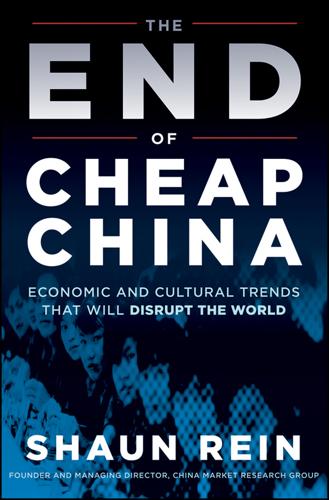
The End of Cheap China: Economic and Cultural Trends That Will Disrupt the World
by
Shaun Rein
Published 27 Mar 2012
Fewer than 10 percent of Western brands selling into the Chinese market in the 1990s actually made money there, in part because no one could afford their products. Another reason was that Western brand positioning often did not fit the aspirations and needs of everyday Chinese people. It is hard to relate to Ralph Lauren, with its preppy lifestyle image of summering in the Hamptons, when you dream of indoor plumbing and eating meat for dinner. The lack of profits and price sensitivity on consumers’ part changed in less than a decade. In its 2010–2011 report, the U.S. Chamber of Commerce in Shanghai found that 79 percent of American companies now make money in China, and 87 percent reported revenue growth in 2010, up from 47 percent in 2009.

Meet the Frugalwoods: Achieving Financial Independence Through Simple Living
by
Elizabeth Willard Thames
Published 6 Mar 2018
We’d also seen quite a few attractive listings we’d seriously considered, but ultimately disqualified for various reasons: you could see the neighbors’ house (we wanted to be remote), there wasn’t enough acreage, there were no outbuildings, one home had a two-mile-long winding driveway leading to a house perched at the apex of a mountain (good for views but not for much of anything else), or, as happened in several instances, the surrounding town and school district weren’t vibrant. Given our year and a half of research, this newfound dream homestead seemed almost too good on paper, which made us fairly certain there’d be some hidden flaw. Probably it didn’t have indoor plumbing or was missing half its roof or was inhabited by a family of black bears. Nevertheless, we decided to drive north for one final pre-baby homestead hunting trip, which was as much babymoon vacation as legitimate house hunt because there’s no way you find your dream homestead when you’re eight months pregnant with your first child, right?!

The Oil and the Glory: The Pursuit of Empire and Fortune on the Caspian Sea
by
Steve Levine
Published 23 Oct 2007
Drainage troughs were installed to capture rainwater, although streets still filled with mud after a good downpour. Walt Marshall, a New York–born helicopter pilot who took a job flying for Chevron, recalled when “five cars at a traffic light was a traffic jam” and outhouses dotted the town because the water pressure wasn’t strong enough to activate indoor plumbing. Now the streets were filled with cars, and water was available most of the day, even hot water. Townspeople catering to the needs of foreigners found themselves flush with cash, and that set off a construction boom. Inevitably, corrupt local officials figured out how to skim dollars from some of the projects; they built some enormous brick houses along the riverfront.
…
Inevitably, corrupt local officials figured out how to skim dollars from some of the projects; they built some enormous brick houses along the riverfront. While the lucky ones were suddenly earning several hundred dollars a month, most Atyrau townspeople remained among the poorest in Kazakhstan, earning an average of less than thirty dollars a month. Yevgeny Karamashin, a twenty-seven-year-old ethnic Ukrainian, longed to find a new home with indoor plumbing for himself, his wife, and a dozen relatives. He survived by poaching catfish, which his wife sold at a nearby bazaar. Samarbek Bukebayev, Atyrau’s forty-eight-year-old chief architect, was the city’s number-one dreamer. He talked about razing 1,777 decrepit buildings and erecting offices and apartment buildings in their place, plus a one-thousand-room luxury hotel, a supermarket, and a modern city hall.

Berlin
by
Andrea Schulte-Peevers
Published 20 Oct 2010
The early years of the German empire – a period called Gründerzeit (foundation years) – were marked by major economic growth, fuelled in part by a steady flow of French reparation payments. Hundreds of thousands of people poured into Berlin in search of work in the factories. Housing shortages were solved by building labyrinthine tenements (Mietskasernen, literally ‘rental barracks’), where entire families subsisted in tiny and poorly ventilated flats without indoor plumbing. New political parties gave a voice to the proletariat, foremost the Socialist Workers’ Party (SAP), the forerunner of the Sozialdemokratische Partei Deutschlands (SPD; Social Democratic Party of Germany). Founded in 1875, the SAP captured 40% of the Berlin vote only two years later. Bismarck tried to make the party illegal but eventually, under pressure from the growing and increasingly antagonistic socialist movement, he enacted Germany’s first modern social reforms, though this was not his true nature.
…
It’s one of about two dozen remaining public urinals that popped up all over Berlin in the late 19th century when the municipal sanitation system couldn’t keep up with the exploding population. Inspired by their distinctive shape, Berliners nicknamed these relief stations Café Achteck (Café Octagon). Most were torn down when indoor plumbing became commonplace, but the survivors are gradually being restored and modernised. The ‘Cadillac’ models – like the new one on Gendarmenmarkt (Map) – can even accommodate women. But you still can’t get coffee… * * * Return to beginning of chapter PRENZLAUER BERG Walking Tour 1 Senefelderplatz Trivia quiz: who’s the inventor of lithography?
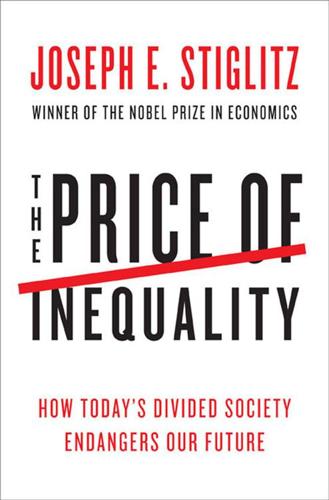
The Price of Inequality: How Today's Divided Society Endangers Our Future
by
Joseph E. Stiglitz
Published 10 Jun 2012
Economists have taken a hard look at differences in lifetime income—and, unfortunately, the wish of the Right doesn’t conform to today’s reality: lifetime inequality is very large, almost as great as income at each moment of time, and has increased enormously in recent years.102 The Right also sometimes claims that poverty in America is not real poverty. After all, most of those in poverty have amenities that are not available to the poor in other countries. They should be grateful for living in America. They have TVs, indoor plumbing, heating (most of the time), and access to free schools. But as a National Academy of Sciences panel found,103 one cannot ignore relative deprivation. Basic standards of sanitation in America’s cities lead naturally to indoor plumbing. Cheap Chinese TVs mean that even the poor can afford them—and indeed, even in poor Indian and Chinese villages, there is in general access to TV. In today’s world, this is not a mark of affluence.
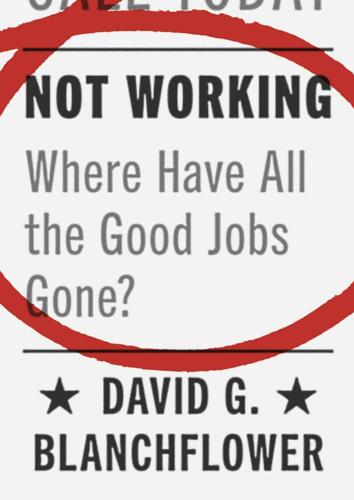
Not Working: Where Have All the Good Jobs Gone?
by
David G. Blanchflower
Published 12 Apr 2021
Bruce notes that the number of cars per household with below median income has doubled since 1980 and the number of bedrooms per household has grown 10 percent despite decreases in household size. Plus, median square footage in these families’ homes has risen about 8 percent. In 1960, 35 percent of households below the 25th percentile of household income did not have indoor plumbing. By 1970 this measure of deprivation shrank to 12 percent, and by 2015 virtually all households at all income groupings had indoor plumbing. Bruce shows that using a different deflator such as the Personal Consumption Expenditures (PCE) index yields modest growth in real wages and in median household incomes throughout the time period. PCE-adjusted wages according to his calculations grew 0.5 percent per year during 1975–2015 while other adjustments grew even more.
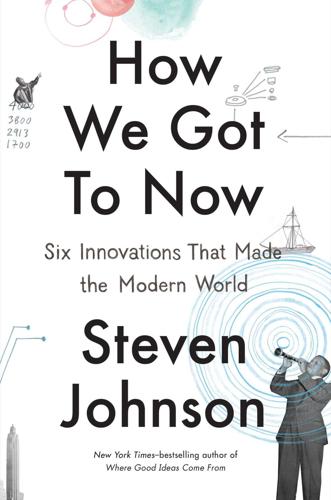
How We Got to Now: Six Innovations That Made the Modern World
by
Steven Johnson
Published 28 Sep 2014
In today’s world, we think of hygiene in fundamentally different ways. The concept of bathing, for instance, was alien to most nineteenth-century Europeans and Americans. You might naturally assume that taking a bath was a foreign concept simply because people didn’t have access to running water and indoor plumbing and showers the way most of us in the developed world do today. But, in fact, the story is much more complicated than that. In Europe, starting in the Middle Ages and running almost all the way to the twentieth century, the prevailing wisdom on hygiene maintained that submerging the body in water was a distinctly unhealthy, even dangerous thing.

Data-Ism: The Revolution Transforming Decision Making, Consumer Behavior, and Almost Everything Else
by
Steve Lohr
Published 10 Mar 2015
Linking modern communications to computing, he observes, brought the Internet uptick in productivity from 1996 to 2004, a relatively brief historical period. Since the early 2000s, Gordon sees technological innovation mainly in consumer electronics. Those inventions, he writes, are “smaller, smarter and more capable, but do not fundamentally change labor productivity or the standard of living” in the way that indoor plumbing, electric lighting, and the automobile did. Gordon’s paper brought an outcry from Silicon Valley and technology optimists in academia. In December 2012, Gordon responded to his detractors in the Wall Street Journal. In the article, Gordon observes that he has been accused of a failure of imagination.

Progress: Ten Reasons to Look Forward to the Future
by
Johan Norberg
Published 31 Aug 2016
Note: An improved water source is one that is protected from outside contamination; improved sanitation is a system that separates excreta from human contact. Sources: WHO 1995, 2015.3 Flush toilets have been used in many civilizations, including the Roman Empire, but the modern water closet was invented in 1596 for Queen Elizabeth I by her godson Sir John Harrington. In the absence of an extensive sewer system it wasn’t very useful. Indoor plumbing and widespread installation of water closets would take another 300 years. There are contemporaneous accounts of aristocrats soiling the corridors of Versailles and the Palais Royal. Indeed, the reason why Versailles’s hedges were so tall was so that they could function as toilet partitions. One eighteenth-century writer described Versailles as ‘the receptacle of all of humanity’s horrors – the passageways, corridors and courtyards are filled with urine and faecal matter’.4 Until modern times, taking a bath was rare, even controversial.

The Office of Historical Corrections: A Novella and Stories
by
Danielle Evans
Published 12 Nov 2020
She was moving in with me, never mind that she had a house full of things on the other side of the country. She was moving to France, never mind that she didn’t speak French. She was joining the Peace Corps, never mind that she was in her late forties and had never so much as been camping because she didn’t understand why anyone would voluntarily separate themselves from reliable indoor plumbing. It was probably my mother’s focus on unlikely and unreasonable futures that gave me the idea that I could still fix something for her. I found Nancy Morton, who was technically my mother’s first cousin, and, besides me, her last living relative. Nancy was Charlie Sullivan’s granddaughter too, and my mother had not seen her since his funeral.
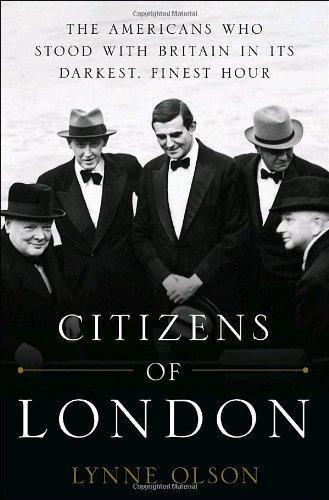
Citizens of London: The Americans Who Stood With Britain in Its Darkest, Finest Hour
by
Lynne Olson
Published 2 Feb 2010
WHILE ED MURROW and Gil Winant were alike in many ways, their backgrounds were vastly different. Murrow’s father had been an impoverished dirt farmer in Polecat Creek, North Carolina, who moved his wife and four sons to Washington State when Ed was five, to find work in logging camps. The family did not have indoor plumbing until Murrow was fourteen and didn’t have a phone during the entire time he lived at home. Idealistic and at the same time intensely ambitious, Murrow was a critic of unearned privilege who strongly believed that journalists should be champions of the underdog. Yet he also yearned for admission to the clubs and salons of upper-class America and England.
…
I shall govern myself accordingly and expect you to do likewise.” Nonetheless, his introduction into the sniffy upper-class world in which his British counterparts operated was a rocky one. A country boy from Abilene, Kansas, Eisenhower had grown up in a house on the wrong side of the tracks, with no running water or indoor plumbing. “There is no question,” wrote one of his biographers, “that poverty steeled young Dwight’s ambition and his determination to excel [and to] succeed.” Yet, although he concealed it well, his humble roots also left him with a deep sense of insecurity, a fear of being perceived as a country bumpkin—a not uncommon unease felt by other Americans when mingling with upper-crust Britons.

Power and Progress: Our Thousand-Year Struggle Over Technology and Prosperity
by
Daron Acemoglu
and
Simon Johnson
Published 15 May 2023
As in Germany, most of the resources had been directed toward armaments, and shortages were endemic. Britain, even if spared the ravages of occupation, was also suffering from the aftermath of the war. The nation had fallen behind in terms of adopting modern appliances. Few households had refrigerators and ovens, already standard in North America, and only half of the houses had indoor plumbing with hot water. Out of these ashes of war came something quite unexpected. The next three decades witnessed breakneck-paced economic growth in much of Europe, from Scandinavia to Germany, France, and Britain. GDP per capita in real terms increased at an average rate of around 5.5 percent in Germany between 1950 and 1973.
…
Nevertheless, these problems are unlikely to explain away the productivity slowdown. The same problem of undercounting quality improvements and broader social benefits from new products has been around ever since national income statistics were first devised. It is far from clear that digital technologies have worsened this problem. Indoor plumbing, antibiotics, and the highway system generated a panoply of new services and indirect effects that were only imperfectly measured in national statistics. Moreover, measurement problems cannot account for the current productivity slowdown; industries with greater investment in digital technologies show neither differential productivity deceleration nor any evidence of faster quality improvements than those that are less digital.
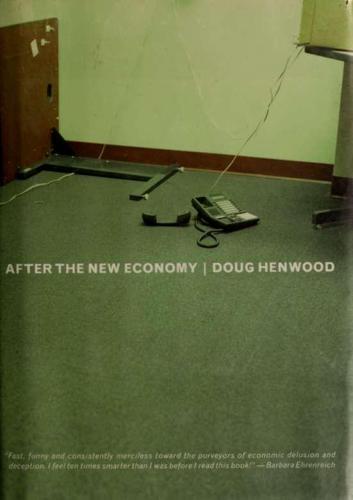
After the New Economy: The Binge . . . And the Hangover That Won't Go Away
by
Doug Henwood
Published 9 May 2005
The development of the telegraph, for example, reduced the time needed for communication across oceans and continents from weeks to seconds; surely this was a change far more profound than the development of the first Mosaic web browser. Similarly with railroads, automobiles, radio, television, antibiotics, telephones, electricity, jet travel, plastics, indoor plumbing.... Indeed, someone born in 1870 and Hving the allotted threescore years and ten saw the world change far more than someone like me, say, born in 1952. And, while the number of new products may be larger than ever in absolute terms, the pace of innovation may actually be slower than in the past.
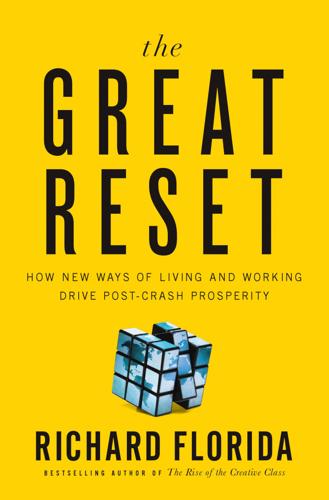
The Great Reset: How the Post-Crash Economy Will Change the Way We Live and Work
by
Richard Florida
Published 22 Apr 2010
Born in the 1920s, my mother and father lived through many of the greatest upheavals of the twentieth century, from the Great Depression of the 1930s to the roaring recovery of the decades that followed the Second World War. Both grew up in Newark, New Jersey’s Italian district, my father’s home absent a refrigerator or indoor plumbing. They recounted stories of the bread lines and tent cities and government-issued clothing that marked the urban misery of the Depression years. My dad left school at age thirteen and took up work in an eyeglasses factory, combining his wages with those of his father, mother, and six siblings to make a family wage.
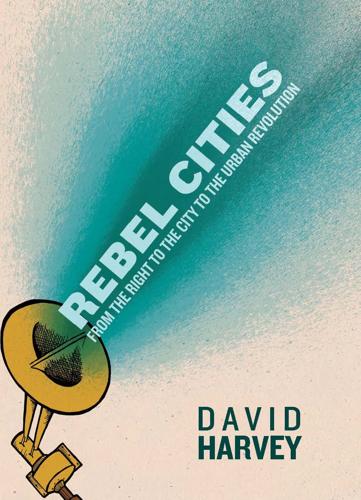
Rebel Cities: From the Right to the City to the Urban Revolution
by
David Harvey
Published 3 Apr 2012
For it was Lefebvre's central conclusion that the city we had once known and imagined was fast disappearing and that it could not be reconstituted I would agree with this, but assert it even more emphatically, because Lefebvre takes very little care to depict the dismal conditions of life for the masses in some of his favored cities of the past (those of the Italian Renaissance in Tuscany). Nor does he dwell on the fact that in 1945 most Parisians lived without indoor plumbing in execrable housing conditions (where they froze in winter and baked in summer) in crumbling neighborhoods, and that something had to be, and-at least during the 1 960s-was being done to remedy that. The problem was that it was bureaucratically organized and implemented by a French dirigiste state without a whiff of democratic input or an ounce of playful imagination, and that it merely etched relations of class privilege and domination into the very physical landscape of the city.
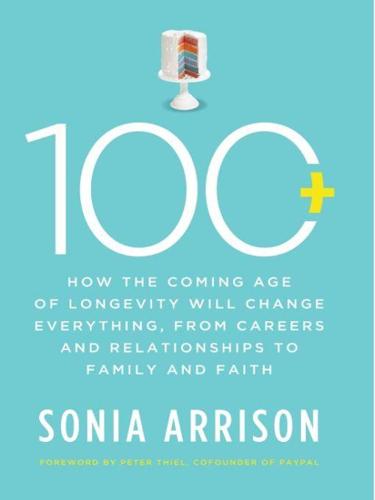
100 Plus: How the Coming Age of Longevity Will Change Everything, From Careers and Relationships to Family And
by
Sonia Arrison
Published 22 Aug 2011
FIGURE 2.1 REDEFINING OLD AGE Before discussing how new technologies will allow us to live longer, it makes sense for readers to briefly examine how life expectancies have been extended thus far. Tragically, the majority of children used to die before reaching adulthood.4 This was mainly due to infectious diseases, poor nutrition, and sanitation problems. Discoveries such as antibiotics, vaccines, vitamins, and indoor plumbing led to humanity’s rapid gains in life expectancy. What this means is that for most of history gains in human life expectancy were made at the beginning, not the end, of life. It is true that older people have always been part of society, but they were less numerous and more weathered than today’s seniors.

Give People Money
by
Annie Lowrey
Published 10 Jul 2018
(I agreed not to name it, in part to avoid directing robbers to it.) It is poor enough that it is considered rude to eat in public, as it is seen to be boasting that you have food. There is just one working water tap, requiring many of the village’s women to walk to a lake or a deep pit to gather water in jerry cans. There is no indoor plumbing and some families still practice open defecation, since they lack the resources to dig a latrine. There are few motorbikes and cars, imperiling anyone with a medical emergency. There is little irrigation and farm equipment—there aren’t even oxen strong enough to pull a plow—so most farming is done by hand.

I Hate the Internet: A Novel
by
Jarett Kobek
Published 3 Nov 2016
They stole his most valuable intellectual property, Watchmen Having committed this theft, the company cheapened Watchmen in the typical fashion: (1) Terrible merchandise. (2) A terrible film. (3) Terrible, creator-unauthorized prequels. This theft and cheapening was achieved through a series of complex contractual gymnastics which occurred in 1985 between a multinational corporation and someone who had grown up without indoor plumbing. Comic Relief was a comic book store that had been located on Haight Street. After the store closed, a great number of other establishments had occupied its former address. In that moment, as Jeremy and Adeline ambled through Buena Vista Park, the storefront was occupied by an establishment called BEHIND CLOSED DOORS.

Only Americans Burn in Hell
by
Jarett Kobek
Published 10 Apr 2019
All the technology really did was create new ways for a person to be annoyed by the neighbors. Fern and Celia knew where the real change had been. They knew what the real difference was between Los Angeles in the Year of the Froward Worm and, say, the early medieval period or the Ancient Hellenic era. Fern and Celia knew that the real change had come with the development of indoor plumbing and, specifically, the management of sewage. Celia and Fern were more sensitive than usual to the problem of human waste and its effective management. After all, they’d both watched the Red-Rose Knight be assassinated by Orson’s shit. The effective management of human sewage had been developed about one hundred years prior to the Year of the Froward Worm.

GDP: The World’s Most Powerful Formula and Why It Must Now Change
by
Ehsan Masood
Published 4 Mar 2021
Throughout these years the family lived off irregular food from local farmers and the kindness of a local grocer who would extend credit knowing that the chances of being paid back were slim to nonexistent. “The long and extreme prairie winters were especially difficult. At times my father had to go out into the bush to cut wood without proper shoes; he’d wrap his feet in rags to keep them warm,” Strong wrote. “We moved from one rented house to another, but none had central heating or indoor plumbing. Because we couldn’t afford the luxury of coal to keep the stove burning all night, the temperature inside on winter mornings was much the same as outside; our clothes would freeze stiff.”7 At times, the Strongs were reduced to eating weeds and dandelion flowers. In spite of such painful hardships Maurice Strong says as a child he was happy in his own company and developed a deep love and knowledge of the natural world.
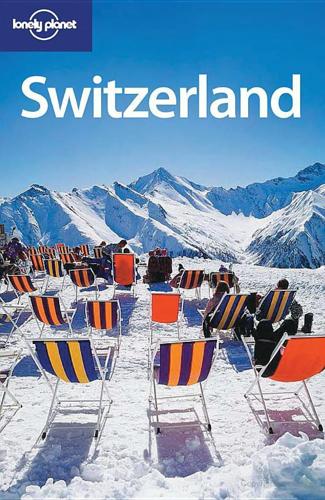
Switzerland
by
Damien Simonis
,
Sarah Johnstone
and
Nicola Williams
Published 31 May 2006
BRUNNI Brunni, on the opposite side of the valley, offers a series of untaxing, relaxing hikes. The cable car (one way/return in summer Sfr14/22) goes up to Ristis at 1600m. Here, there’s a chairlift that takes you to the Brunni Hütte (%041 637 37 32; www.berghuette.ch; adult/child Sfr52/35, breakfast Sfr10), a recently refurbished mountain hut that now has indoor plumbing. From here you can watch a magnificent sunset before spending the night. OTHER HIKES In summer, it’s also possible to leave Engelberg on foot. The Surenenpass (2291m) is the scenic route to Attinghausen, from where a bus can take you to Altdorf and the southern end of Lake Uri. It takes around seven hours to get to Attinghausen; taking a cable car along the route can save two hours.
…
Mattresses are often crammed side by side in massive bunks in these places; however, there are usually no curfews and the doors aren’t usually locked during the day. Some camp sites offer simple dorm beds too. Student dorms in university towns may also be offered during holidays. There’s been a move in recent years to upgrade the accommodation in Alpine huts – including indoor plumbing – although most remain quite basic. There are some 150 huts, all maintained by the Schweizer Alpenclub (Swiss Alpine Club; %031 370 1818; www. sac-cas.ch in German & French). They’re rarely full and you’ll probably be offered a place on the floor rather than being turned away. If there’s no warden, payment depends on an honesty system, and there will be a book for signing in.
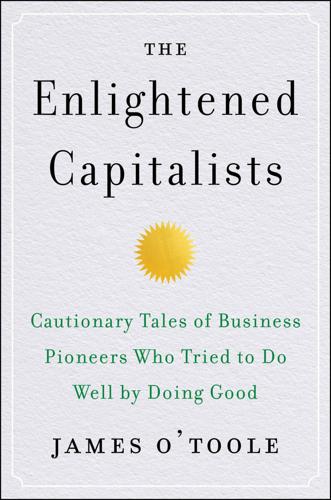
The Enlightened Capitalists
by
James O'Toole
Published 29 Dec 2018
In many ways a modern version of Owen’s New Lanark, Lever’s Port Sunlight was situated on the banks of the Mersey River, not far from Liverpool and adjacent to Lever Bros.’ new soap factory (capacity, sixteen thousand tons).8 But instead of being a grimy, disease-infested mill town like Bolton, Port Sunlight offered Lever employees up-to-date, spacious homes designed by a leading architect, all with indoor plumbing, their rent heavily subsidized by the company (employees were offered financing to enable them to purchase the homes). Lever’s intention was to create a close-knit community with company-sponsored schools, parks, shops, health care, sports fields, swimming pool, concert hall, gymnasium, library, and cultural clubs and events: “It is my hope, and my brother’s hope, to build houses in which our work people will be able to live and be comfortable—semi-detached houses, with gardens back and front, in which they will learn more about the science of life than they can in a . . . slum, and in which they will learn there is more enjoyment in life than the mere going and returning from work and looking forward to Saturday night to draw their wages.”9 Starting in 1890, Lever did just that at Port Sunlight—and more.
…
Drawing inspiration from Lever’s Port Sunlight and Burnham’s City Beautiful movement, Hershey hired engineers, architects, landscape gardeners, and others to design a model town, draw up a street grid, and begin to lay its infrastructure. Hershey wanted the latest, best, and most beautiful of everything from sewer lines to community buildings. His well-planned town would have green open spaces, a public park, a zoo, a library, a swimming pool, and a hospital. All its two-story homes would have indoor plumbing, electricity, and central heating. Thanks to generous financing by the Hershey Chocolate Company, the workers would own their homes. Not only would the town have a trolley to take people from their homes to the factory where they worked, Hershey would also build a railroad to connect this remote locale to Lancaster and the nation’s main railway lines.
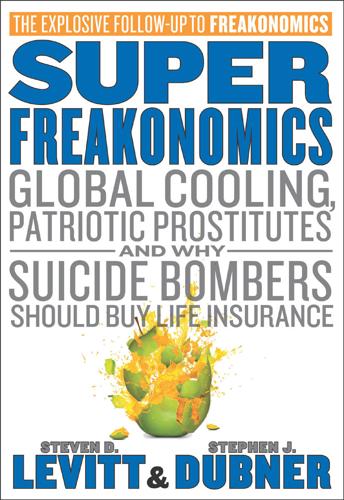
SuperFreakonomics
by
Steven D. Levitt
and
Stephen J. Dubner
Published 19 Oct 2009
Parker, two economists who analyzed the data from more than 100,000 Oportunidades clients, found that applicants routinely underreported certain items, including cars, trucks, video recorders, satellite TVs, and washing machines. This shouldn’t surprise anyone. People hoping to get welfare benefits have an incentive to make it sound like they are poorer than they truly are. But as Martinelli and Parker discovered, applicants overreported other items: indoor plumbing, running water, a gas stove, and a concrete floor. Why on earth would welfare applicants say they had these essentials when they didn’t? Martinelli and Parker attribute it to embarrassment. Even people who are poor enough to need welfare apparently don’t want to admit to a welfare clerk that they have a dirt floor or live without a toilet.
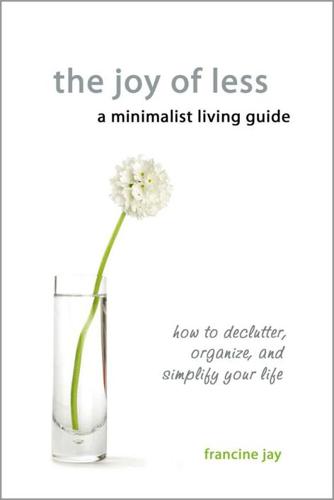
The Joy of Less, A Minimalist Living Guide: How to Declutter, Organize, and Simplify Your Life
by
Francine Jay
If you ever feel the slightest bit deprived, just open this book—most middle-class Americans will find they own more material goods than other First World families; and the humblest of our abodes would be palaces to the poorest ones. It’s truly eye-opening how little some people possess; I learned that even indoor plumbing is a rarity in some parts of the world. It gave me a new perspective on my relative “affluence,” and made me realize how lucky I am to have any bathroom at all! Now that we have a better understanding of where we stand in the world (and not just compared to celebrities or our neighbors), let’s wrap up our discussion of “enough” with a little exercise.

Restarting the Future: How to Fix the Intangible Economy
by
Jonathan Haskel
and
Stian Westlake
Published 4 Apr 2022
Some of them argue that the issues we face today are just the manifestation of long-standing failings, the chickens of capitalism coming home to roost. Others maintain that stagnation is the inevitable consequence of progress, perhaps because historical growth rates depended on technological good luck—for example, transformational inventions such as the internal combustion engine, electrification, television, and indoor plumbing—and we are simply not so lucky in the technologies available to us today. Some circumstantial explanations are pessimistic, maintaining that the past two decades represent a new normal; others are more optimistic, predicting an improvement in the future as we discover ways to make new technologies productive.

The Children of the Sky
by
Vernor Vinge
Published 11 Oct 2011
The half-timbered houses were large, each big enough for a married couple, a young child or children on the way, and one or two pack friends. Oobii was able to keep the buildings warm by shining a very low-power beam gun on the hot water towers that stood next to each house. So the town houses were comfortably warm all year round, with hot and cold running water and indoor plumbing. A large part of Oobii’s tech rent had gone into paying for the Children’s town houses. The second-generation kids thought they were heavenly. Their parents regarded the houses as a small step up from purgatory. “Ha. I felt another pulse,” said Scrupilo. Ravna called the ship. Still no joy. “We’re almost to Cliffside harbor, Scrupilo.
…
Bili was apparently Nevil’s chief lieutenant. Bili was smiling and respectful. “Nevil wanted to show you this place, but I think he’s discovered just how much work admin can be,” he said, with a disarming grin. They were on the second floor of her new home. Like all the town houses, this had steam heating and indoor plumbing. These new ones had a second flush toilet on the upper floor. The upper floor had both a front stairs and a back stairs. There was a living room with wide glass windows. The southwest exposures gave a grand view across the Inner Channel. “This is the first house with the new optical-grade glass sheeting.

The Perfect Thing: How the iPod Shuffles Commerce, Culture, and Coolness
by
Steven Levy
Published 23 Oct 2006
Instead, supposedly wide-eyed oracles like myself would be sitting on a panel, taking a deep breath before we pronounced that one day maybe a hundred million people would be on the Net, and, yes, one day every person in this audience might have an e-mail address! Invariably someone would smirk at such lunacy—a fad, they'd say, millennial pap! Remember CB radio? Obviously, the Internet did what CB radio could not and is no more a fad than were language, musical instruments, and indoor plumbing. But as the twenty-first century began, the Internet had not yet fulfilled the dream of CB radio: a people's form of broadcasting. Publishing of the written word, yes—it was easy to start a Web site, and the nascent blogging movement made it possible to distribute one's prose worldwide with a single mouse click.
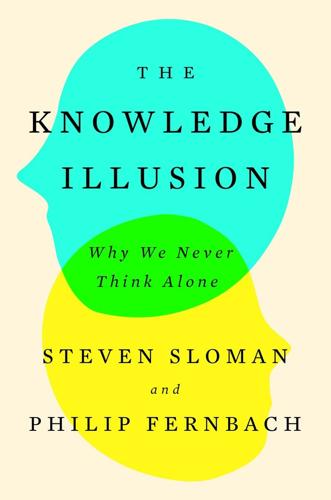
The Knowledge Illusion
by
Steven Sloman
Published 10 Feb 2017
There’s an explosive gain in efficiency and power when cognitive labor is divided. This explosive gain resulting from the division of cognitive labor can be seen directly in the construction of a building. Individuals working alone can put up a tent or even build a log cabin. Modern homes, with indoor plumbing, insulation, temperature control, full-service kitchens, and home entertainment systems, require a group effort. Consider the variety of trades that participate in building a modern home: surveyors, excavators, framers, bricklayers, roofers, plumbers, drywall and window installers, carpenters, painters, plasterers, electricians, cabinetmakers, landscapers, and carpet installers.

Capitalism Without Capital: The Rise of the Intangible Economy
by
Jonathan Haskel
and
Stian Westlake
Published 7 Nov 2017
Most memorably, he argued that technological progress might have slowed down, or, more specifically, that the economic benefit of new discoveries was less than had been the case in the past. The economist and economic historian Robert Gordon developed this theme in his influential 2016 book The Rise and Fall of American Growth, in which he argued that the inventions over the twentieth century, such as electricity, indoor plumbing, and the like, were part of “one big wave of innovation” that will not be repeated. This explanation for secular stagnation has proved controversial, not least because it turns out to be very difficult to measure whether technological progress has slowed down. A totally out-of-the-blue technological slowdown that is not easy to confirm using data has seemed to some too much of a deus ex machina, and many of those interested in secular stagnation have looked around for other causes.
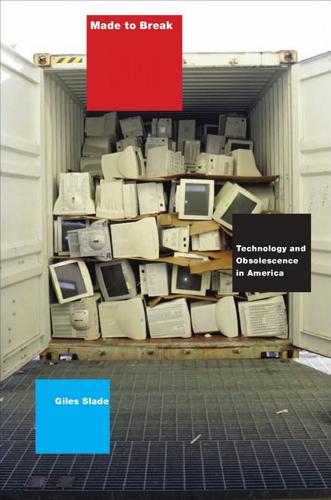
Made to Break: Technology and Obsolescence in America
by
Giles Slade
Published 14 Apr 2006
In every major metropolis, from Baltimore to San Antonio, large construction companies appeared which adopted Levitt and Son’s concrete-slab construction.31 If basements became obsolete simply as a matter of economy, the reasons for the appeal of porchless houses was slightly more complex. After World War II, many people came to associate porches with old-fashioned houses whose indoor plumbing, electrical wiring, and other amenities were substandard.32 But in the postwar years, porches suffered from another unpleasant association. They were one example of what the sociologist Sharon Zukin calls liminal spaces—public areas for meeting, mixing, and transit.33 For low-income inner-city tenants, these liminal spaces, including front stoops, hallways, parks, sidewalks, squares, bus stops, and train terminals, can be sites of uncomfortable interactions—elevator silences, excessive noise, physical aggression.
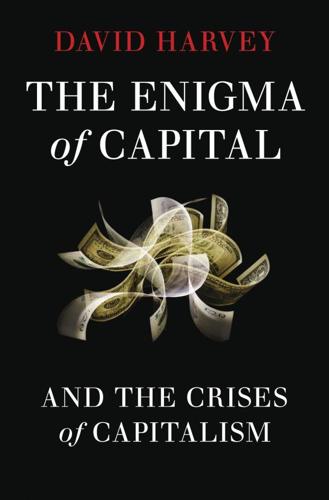
The Enigma of Capital: And the Crises of Capitalism
by
David Harvey
Published 1 Jan 2010
He bought up a huge tract of land in Amazonia, called his new town Fordlandia, and sought to impose upon the tropical rainforest an American Midwestern lifestyle for the rubber plantation and factory workers. The idea was to secure the flow of rubber for the tyres of his cars (he had established control over almost everything else). ‘Fordlandia had a central square, sidewalks, indoor plumbing, manicured lawns, a movie theater, shoe stores, ice cream and perfume shops, swimming pools, tennis courts, a golf course, and, of course, Model Ts rolling down its paved streets,’ writes Grandin. Nothing came of it all, even after twenty years of trying and the outlay of astronomical amounts of money.

The Power of Glamour: Longing and the Art of Visual Persuasion
by
Virginia Postrel
Published 5 Nov 2013
As an adult, he worked tirelessly as a designer to attain the lifestyle Menzel’s scene represented, a dream Lagerfeld’s biographer Alicia Drake describes as “a world of wit and erudite conversation, a world of light and luxury, choreographed manners and costume, a world of curiosity and a possibility of the superlative.”22 Here is the paradox. The glamour that inspired Lagerfeld was an illusion. The painting naturally omits the unpleasant aspects of eighteenth-century existence (even for aristocrats), from the terrors of smallpox to the lack of indoor plumbing. More important, the manners and customs of eighteenth-century aristocrats are long gone, as Lagerfeld himself acknowledges. “All that has followed is petit bourgeois,” he said in 1979.23 For good or ill, the life of that party cannot be reclaimed by re-creating the scene with antiques and a contemporary group of fashionably attired men.

The Second Machine Age: Work, Progress, and Prosperity in a Time of Brilliant Technologies
by
Erik Brynjolfsson
and
Andrew McAfee
Published 20 Jan 2014
As Gordon shows, however, once this growth got started it stayed on a sharp upward trajectory for two hundred years. This was due not only to the original Industrial Revolution, but also to a second one, it too reliant on technological innovation. Three novelties were central here: electricity, the internal combustion engine, and indoor plumbing with running water, all of which came onto the scene between 1870 and 1900. The ‘great inventions’ of this second industrial revolution, in Gordon’s estimation, “were so important and far-reaching that they took a full 100 years to have their main effect.” But once that effect had been realized, a new problem emerged.
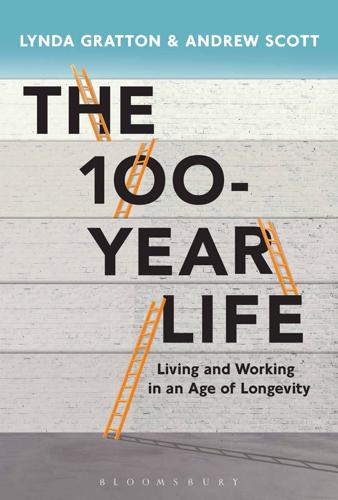
The 100-Year Life: Living and Working in an Age of Longevity
by
Lynda Gratton
and
Andrew Scott
Published 1 Jun 2016
Looking back 100 years, a present-day centenarian has seen much in their lifetime: two world wars and a shift from soldiers on horseback to nuclear weapons; the Russian Revolution and the rise and fall of communism; an end to the first wave of globalization and the emergence of the second; the collapse and subsequent ascendance of China; the advent of electricity, radio and television; the early days of the Model T; the first-ever commercial air flight; and, of course, the first manned flight to the moon, as well as the rise of the internet. At a domestic level they would have seen the advent of automatic washing machines, the widespread adoption of indoor plumbing in the house, as well as the vacuum cleaner, not to mention the introduction of the zipper and the bra! A moment’s reflection on these changes makes it obvious that being able to forecast developments for the centenarians born today is nonsensical. Dealing with this uncertainty will be a major part of living a long life.

The Postman
by
David Brin
Published 1 Jan 1985
Soon the crowd was singing bawdy folk songs and old commercial jingles. The mood was high. Hope was thick as the warm, dark beer, and tasted at least as good. It was later in the evening that he heard it for the first time. On his way out of the men’s room—grateful that Cottage Grove had somehow retained gravity-flow indoor plumbing—Gordon stopped suddenly near the back stairs. There had been a sound. The crowd by the fireplace was singing. . . . “Gather ‘round and listen to my tale—a tale of a fateful trip. . . .” Gordon cocked his head. Had he imagined the other murmur? It had been faint, and his head was ringing a bit on its own from the beer.

The Age of Stagnation: Why Perpetual Growth Is Unattainable and the Global Economy Is in Peril
by
Satyajit Das
Published 9 Feb 2016
In 2015, the McKinsey Global Institute estimated that, without labor productivity increases to offset the effects of aging populations and declining birthrates, it is conceivable that there will be a 40 percent drop in GDP growth rates and a 20 percent drop in the growth rate of per capita income globally.8 Innovation too may be flagging. Economist Robert Gordon identified three phases of innovation.9 Industrial revolution 1 (1750–1830) focused on coal, steam engines, railroads, and textiles. Industrial revolution 2 (1870–1900) saw five key innovations: electricity; the internal combustion engine; running water, indoor plumbing, and central heating; rearranging molecules central to petroleum, chemicals, plastics, and pharmaceuticals; and communication and entertainment devices such as the telephone, the phonograph, popular photography, radio, and motion pictures. Industrial revolution 3 (1960 to the present) has been concentrated around computing and telecommunications.
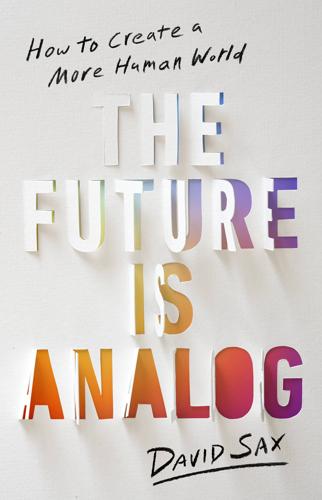
The Future Is Analog: How to Create a More Human World
by
David Sax
Published 15 Jan 2022
Shoshanna Saxe was skeptical of Sidewalk Labs from the start, but she understood its instant appeal to local politicians, business leaders, and other excited residents. She believes our attraction to the smart city comes from an honest desire to make positive changes to cities, but in a way that’s easy and quick. In the past, technology had delivered transformational solutions to pressing urban problems. Indoor plumbing basically eliminated illness and death from sewage-borne diseases like cholera. Refrigeration changed how we shop, cook, and eat in urban areas. Electric light completely transformed the timetable of city economies and culture, and subways and streetcars allowed us to knit together disparate villages into broader urban communities.
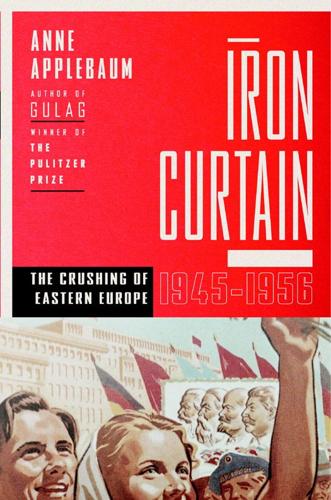
Iron Curtain: The Crushing of Eastern Europe, 1945-1956
by
Anne Applebaum
Published 30 Oct 2012
And so even as the Palace of Culture was under construction, the city bureau also began to rebuild Warsaw’s medieval Old Town and its historic main thoroughfare, Nowy Świat, in excruciating, painstaking detail. The party was somewhat embarrassed by this: Bierut explained that healthy, sanitary, contemporary apartments would be constructed behind the old-fashioned façades, and would be handed immediately to worthy members of the working class.58 But despite the addition of indoor plumbing, the Old Town eventually looked so familiar that some found it eerie. One former resident of the medieval city center described the effect years later: “The house I was born in was destroyed violently … but I can go into the bedroom I had as a boy, look out of the exact same window at the exact same house across the courtyard.
…
Unusually, Tevan had her own apartment: “There was a hostel for engineers but since everybody was a man, I got a separate room in a half-ready building. The walls were not plastered, the room was so damp that I had to sleep with my clothes on and by the morning all my clothes had become wet.” But the apartment did have indoor plumbing and a small kitchen, and Tevan lived alone. Though she didn’t tell Kollár at the time, her fiancé was then in prison, having been swept up with dozens of others in the wake of the Rajk trial. She invited Kollár to stay with her, and the two women lived together until Kollár married a year later.

Zoe's Tale
by
John Scalzi
This is Trujillo’s tent. He and Gretchen will be living here.” “Good,” I said. I had caught up with Dad with Gretchen and her dad; the two of them had gone off to look at the little river that ran near the edge of our soon-to-be settlement to find out the best place to put the waste collector and purifier. No indoor plumbing for the first few weeks at least, we were told; we’d be doing our business in buckets. I can’t begin to tell you how excited I was to hear that. Gretchen had rolled her eyes a little bit at her dad as he dragged her off to look at likely locations; I think she was regretting taking the early trip.
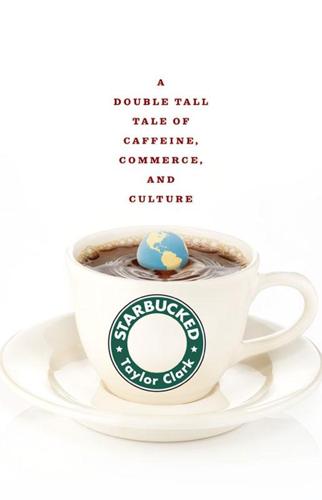
Starbucked: A Double Tall Tale of Caffeine, Commerce, and Culture
by
Taylor Clark
Published 5 Nov 2007
San Francisco proper, with seventy-five outlets for its 744,000 inhabitants (score: 10.1), rates highly; Cleveland, which has just nine of them for its 478,000 people (score: 1.9), not so much. And Detroit (score: 0.4) might want to have its mayor put in an emergency call to Seattle. Consequently, long-struggling communities often react to the arrival of Starbucks the same way some citizens of developing nations react to getting indoor plumbing. When one finally opened in Lexington, Kentucky, in 2002, a local business owner was actually quoted as saying, “Hallelujah!” There’s something almost delusional in the way people talk about their new Starbucks. When the company debuted in Muskegon, Michigan, for example, the president of the local chamber of commerce crowed, “Having them locate in Muskegon is a symbol that we are a community of the future.”

The Black Nile: One Man's Amazing Journey Through Peace and War on the World's Longest River
by
Dan Morrison
Published 11 Aug 2010
Khalifa was old and retired, and maybe a little wired. He and his wife, Afaf, had received a three-bedroom house even though their children were all grown and gone. Afaf even ran a little snack and soda stand nearby. I walked deeper into the settlement and found a few other villagers who said they were adjusting nicely to the indoor plumbing and plentiful electricity of their new homes, but they clammed up when a car appeared and parked about twenty yards away. A lone driver got out and watched our meeting without approaching. “We hass to go now,” the taxi driver said. “He is bolise.” Bolise were indeed everywhere in Egypt. Young men in black woolen uniforms lounged outside the tourist sites pretending to screen visitors for explosives and guns.
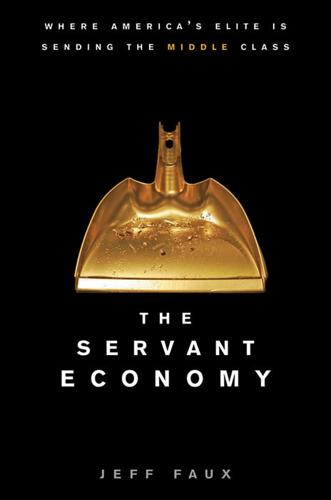
Servant Economy: Where America's Elite Is Sending the Middle Class
by
Jeff Faux
Published 16 May 2012
Bush’s tax cuts for the wealthy.1 To be sure, Krugman’s phrase—conjuring up the image of strutting generals, hacienda-owning oligarchs, and tin-shack poverty—was tongue-in-cheek. The United States is not a third-world country. Our generals tend not to strut, our oligarchs don’t typically raise cattle, and our poor usually have indoor plumbing. But just as surely, a rough template of long-term austerity is slowly being fit onto American society. Given the unequal distribution of income and wealth, widely shared prosperity wholly depends on rapid economic growth. The basic arithmetic is not controversial. The workforce is growing at roughly 1 percent per year.
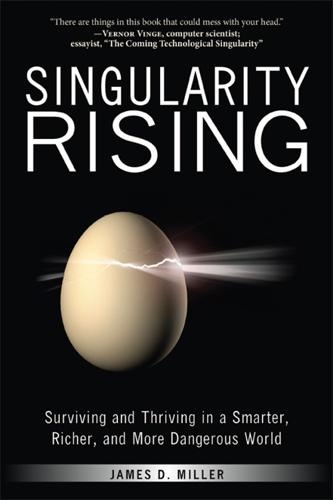
Singularity Rising: Surviving and Thriving in a Smarter, Richer, and More Dangerous World
by
James D. Miller
Published 14 Jun 2012
CHAPTER 18 Singularity Watch ACKNOWLEDGMENTS NOTES REFERENCES INDEX INTRODUCTION We are on the edge of change comparable to the rise of human life on Earth. —Vernor Vinge1 Economic prosperity comes from human intelligence. Consider some of the most basic human inventions—the wheel, the alphabet, the printing press—and later, more complex and advanced inventions such as indoor plumbing, automobiles, radio, television, and vaccines. All are products of the human brain. Had our species been a bit less bright, these inventions might have escaped us. Yet we can only begin to imagine the many additional wondrous technologies we might now possess had evolution made us even smarter.
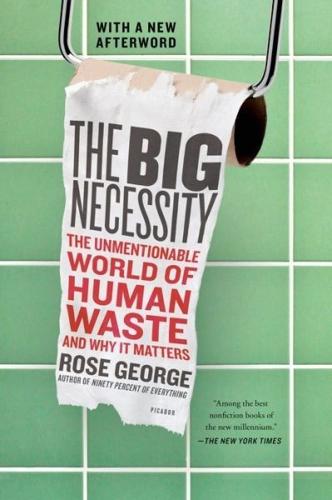
The Big Necessity: The Unmentionable World of Human Waste and Why It Matters
by
Rose George
Published 13 Oct 2008
American humans may love water, but not to clean their backsides with. On the Web site of the American Bidet Company, company founder Arnold Cohen, who prefers to be called “Mr. Bidet,” expresses his conviction that the bidet “is the most significant innovation for personal hygiene and sanitation since the introduction of indoor plumbing.” But the bidet has known limited spread beyond its French origins, and even in France it is disappearing. Ninety percent of French homes used to have a bidet; now it’s 10 percent. Yet if logic governed human cleansing habits, the bidet would be as common as the toilet. Instead, it has generally been viewed with suspicion or bewilderment.

Family Trade
by
Stross, Charles
Published 6 Jan 2004
You’ve been telling me that I can’t escape the Clan, and I’m afraid you’re right—you’ve convinced me— but that only means I’ve got to change things. To carve out a niche I can live with.” She stood up and walked toward him. “I don’t like the way the families live like royalty in a squalid mess that doesn’t even have indoor plumbing. I don’t like the way their law values people by how they can breed and treats women like chattels. I don’t like the way the outer family feel the need to defend the status quo in order to keep from being kicked in the teeth by the inner families. The whole country is ripe for modernization on a massive scale, and the Clan actually has the muscle to do that, if they’d just realize it.

Revolution Business
by
Stross, Charles
Published 9 Apr 2009
The gears whirred in Miriam's head. "Evacuate the Gruinmarkt?" If that was even on the menu-"Why hasn't it already happened?" "Would you voluntarily abandon your home? Your world?" Brill looked at her oddly. "Urn. It's home, right?" The idea resonated with her own experience. "But there are no decent roads, no indoor plumbing, hedge-lords with pigs in their halls, a social setup out of the dark ages-why would you stay?" "Home is where everyone you know is," said Brill. "That doesn't mean you've got to love it-you know my thoughts, my lady! What you can't do is ignore it." Miriam fell silent for a couple of minutes, thinking.
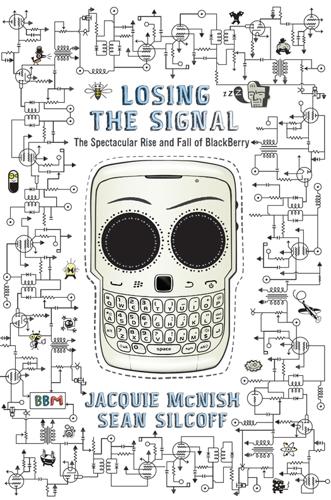
Losing the Signal: The Spectacular Rise and Fall of BlackBerry
by
Jacquie McNish
and
Sean Silcoff
Published 6 Apr 2015
Players had to get their head back in the game and Smith knew how to get them there. Once Balsillie explained his circumstances, Smith shared his own story. He was one of ten children born into a hard-luck family in Prince Edward Island. According to Smith’s book, Internal Perfection, his parents lacked money for such basic necessities as indoor plumbing or electricity.14 As a young man, Smith battled a drinking problem, moved to Alberta to work as a pipe fitter, corked his alcohol dependency, and parlayed his redemption into a new career as a high-end personal life coach. Smith shared past traumas with clients to put them at ease. Anything bad they were going through had already happened to him.

Time Paradox
by
Philip G. Zimbardo
and
John Boyd
Published 1 Jan 2008
Shakespeare, Cymbeline THE LAST DECADE has seen an explosion of books about poop. When my two-year-old granddaughter crawls up onto my lap, she typically brings with her a fat stack of picture books, including several that explore in considerable detail the miracle of defecation and the mysteries of indoor plumbing. Some offer detailed descriptions for the budding anatomist; some offer little more than drawings of happy children, squatting, standing, and wiping. Despite their many differences, each of these books communicates the same message: Grown-ups do not poop in their pants, but if you do, then don’t worry too much about it.
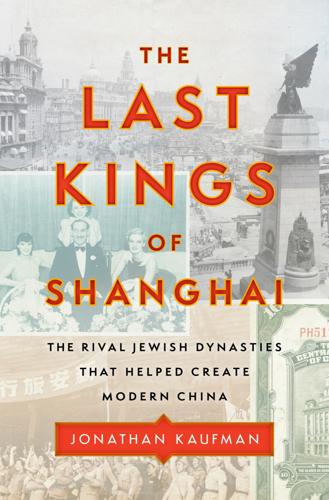
The Last Kings of Shanghai: The Rival Jewish Dynasties That Helped Create Modern China
by
Jonathan Kaufman
Published 14 Sep 2020
“I like sharing my bed but not my bath,” he told a friend. The Cathay made the Kadoories’ hotels, even the famed Majestic Hotel, look dowdy by comparison. Guests abandoned the Kadoories’ Astor House Hotel, just down the Bund from the Cathay, which still required room boys to pick up chamber pots, while the Cathay had indoor plumbing. Overnight, Victor’s Cathay turned the Kadoorie hotel into “a second-rate establishment,” an English-language newspaper in Shanghai wrote. An American visitor described the Astor House as “a faded green, cavern-like wooden structure, with tall rooms smelling of must and mildew.” By contrast, slender Chinese women in elegant cheongsams spurned the Majestic and flocked to the Cathay, blending with foreign hotel guests looking for the trendiest tea dances—a British tradition combining afternoon tea with dancing—and the latest jazz.

Can We Talk About Israel?: A Guide for the Curious, Confused, and Conflicted
by
Daniel Sokatch
Published 18 Oct 2021
But as famine gripped Ethiopia, and as Jews stumbling across the border into Israel warned about the threat of imminent starvation facing the Jewish community there, Israel’s intelligence agency, Mossad, devised a plan to rescue them. With the cooperation of the CIA, Israel airlifted more than eight thousand Jews from Ethiopia to Israel. It was called “Operation Moses,” and on those early trips to Israel, I visited “Absorption Centers,” where Ethiopian Jews (many of whom had never seen electric lights or indoor plumbing) learned Hebrew and prepared for lives in Israel. I met and talked to young Ethiopian Jews, kids my age, who told me about their lives, their dreams of coming to Israel, the terrors of war and famine, and their arrival in the airlifts. It seemed to me then, and it still does now, that Operation Moses was a beautiful example of the whole rationale for Israel in the first place.

Mindf*ck: Cambridge Analytica and the Plot to Break America
by
Christopher Wylie
Published 8 Oct 2019
One often sees completely veiled Muslim women shopping in the same off-license greengrocer as tattoo-clad club kids with asymmetrical hair. It is still a place where I can walk outside in relative anonymity. My building is old, built in a time before the Internet was even imaginable and when indoor plumbing was still a novelty. The floor is wooden and solid, but every so often it creaks as you take a step. There are extra bolts on the door, installed after a group of men kept coming to the door the week after I went public. My neighbors started complaining, until they realized who I was. Now they let me know anytime they see people loitering nearby.

The Glass Castle: A Memoir
by
Jeannette Walls
Published 15 Mar 2005
Since we had no money for a down payment and no steady income, our options were pretty limited, but within a couple of days, Mom and Dad told us they had found a house we could afford. "It's not exactly palatial, so there's going to be a lot of togetherness," Mom said. "And it's on the rustic side." "How rustic?" Lori asked. Mom paused. I could see her debating how to phrase her answer. "It doesn't have indoor plumbing," she said. Dad was still looking for a car to replace the Olds—our budget was in the high two figures—so that weekend we all hiked over for our first look at the new place. We walked down the valley through the center of town and around a mountainside, past the small, tidy brick houses put up after the mines were unionized.

Time Travelers Never Die
by
Jack McDevitt
Published 10 Sep 2009
“Avoid the irreparable act.” Michael commented that his visitors must be hungry. But nobody was, so he simply had Albertino bring out some wine. “I can’t resist asking,” he said finally. “Where else have you been?” THEY stayed through the night. The beds were soft, and Shel was surprised to discover indoor plumbing, including a flush toilet and a shower. “They’re in common use,” said Michael, in the morning. “You could use some air-conditioning.” Michael glanced over at Dave, who was busily looking elsewhere. “You’re spoiled,” he said. “I know.” Shel sat back. They’d just had a superb breakfast of bacon and eggs and the largest pieces of toast he’d ever seen.

Utopia Is Creepy: And Other Provocations
by
Nicholas Carr
Published 5 Sep 2016
Should Zuckerberg’s move increase the supply of organs, it will save many lives and alleviate much suffering. We should all be grateful. Dark dreams of the future are best left to science fiction writers. THE HIERARCHY OF INNOVATION May 14, 2012 If you could choose only one of the following two inventions, indoor plumbing or the Internet, which would you choose? —Robert J. Gordon HARVARD BUSINESS REVIEW EDITOR Justin Fox is the latest pundit to ring the “innovation ain’t what it used to be” bell. “Compared with the staggering changes in everyday life in the first half of the 20th century,” he writes, “the digital age has brought relatively minor alterations to how we live.”

The Inevitable: Understanding the 12 Technological Forces That Will Shape Our Future
by
Kevin Kelly
Published 6 Jun 2016
Before we invented automobiles, air-conditioning, flat-screen video displays, and animated cartoons, no one living in ancient Rome wished they could watch pictures move while riding to Athens in climate-controlled comfort. I did that recently. One hundred years ago not a single citizen of China would have told you that they would rather buy a tiny glassy slab that allowed them to talk to faraway friends before they would buy indoor plumbing. But every day peasant farmers in China without plumbing purchase smartphones. Crafty AIs embedded in first-person shooter games have given millions of teenage boys the urge, the need, to become professional game designers—a dream that no boy in Victorian times ever had. In a very real way our inventions assign us our jobs.

Hit Makers: The Science of Popularity in an Age of Distraction
by
Derek Thompson
Published 7 Feb 2017
In the 1950s, the television went from living room curiosity to household ubiquity. Less than 1 percent of homes owned a television set in 1948. One decade later, 83 percent did, and they sat in front of it for more than five hours a day. No personal technology—not the radio, the telephone, the car, the refrigerator, or indoor plumbing—had ever spread so quickly from household to household. Newspapers initially ignored the threat from television. Print journalism was “far more fascinating, far more varied, and offers far greater possibility of financial reward,” New York Daily News executive editor Richard W. Clarke said in 1947.

Cultureshock Paris
by
Cultureshock Staff
Published 6 Oct 2010
By the beginning of the 14th century, its population had reached more than 250,000, cramped in an area perhaps one-quarter of the city’s size today. It may have had an awe-inspiring cathedral and other impressive churches and palaces, and it may have become a renowned centre of learning, but crowded and dank as most cities were at that time, Paris stank. The rich, of course, lived well regardless of the conditions, but with no indoor plumbing or underground sewers; with horses traversing the streets; rubbish piling up and trenches for excrement running open in the middle of many streets—life in the city was not easy for the masses. Houses were heated by fireplaces that smoked and built up soot inside and out; food spoiled quickly; and insects and bugs thrived in bedlinens, clothes and on the people themselves, who went mostly unwashed.

Clan Corporate
by
Stross, Charles
Published 28 Aug 2006
she called through the doorway. “Thirty-nine.” The closing kitchen door cut the rest off. Miriam stared after him, slightly horrified. She’d taken him for at least a decade older, well into middle age. This was a roomy apartment, top of the line for the working classes in this time and place. It had luxuries like indoor plumbing, piped town gas, batteries for electricity. But it was no place to live alone, with tuberculosis eating away at your lungs. She stood up and followed the sounds through to the kitchen. “Erasmus-” She paused in the doorway. He had his back turned to her, washing his hands thoroughly under a stream of water piped from the coal-fired stove.

Rise of the Robots: Technology and the Threat of a Jobless Future
by
Martin Ford
Published 4 May 2015
PayPal co-founder Peter Thiel’s famous comment—“We were promised flying cars, and instead what we got was 140 characters”—captures the sentiment of a generation that expected the future to be way cooler than this. This lack of broad-based progress stands in stark contrast to what a person who lived through the final decades of the nineteenth century and the first half of the twentieth would have experienced. Indoor plumbing, automobiles, airplanes, electricity, home appliances, and public sanitation and utility systems all came into widespread use during this period. In industrialized countries, at least, people at all levels of society received an astonishing upgrade in the quality of their lives, even as the overall wealth of society was propelled to dizzying new heights.

How the Post Office Created America: A History
by
Winifred Gallagher
Published 7 Jan 2016
Thank God.” • • • BY THE LATE NINETEENTH CENTURY, the inescapable fact that urban and rural Americans now lived in different worlds had become an issue of great domestic importance. Residents of cities and towns increasingly enjoyed the world’s most modern homes, equipped with clean water, indoor plumbing, and central heat and light. They had good roads, rail service, municipal utilities, and libraries, as well as access to mass entertainment and the latest consumer goods. The post brought the latest news and information to their doorsteps and enabled many to carry on same-day correspondence. The lives of many of the farmers and settlers who still made up 65 percent of the population were nearly medieval in comparison.

A Fever in the Heartland: The Ku Klux Klan's Plot to Take Over America, and the Woman Who Stopped Them
by
Timothy Egan
Published 4 Apr 2023
Irish laborers had helped to build the city; refugees of the Great Famine dug the ditch that would become the Wabash and Erie Canal, largest in the United States, connecting Evansville to Lake Erie, 460 miles to the north. But because of their religion, they were second-class citizens in the caste system that the Klan exploited in Evansville. The 6,000 or so Black residents were forced into tenements and shacks in Baptisttown, a shank of the city without electricity or indoor plumbing. They were constantly harassed. Memories of a 1903 slaughter—twelve Blacks murdered and four saloons burned to the ground by a white mob—still haunted. The Carnegie Library, supposedly open to all as a springboard to the world’s possibilities, was for whites only. When a white college student working at a gas station during his summer break offered to clean the windshields of Black motorists, he was scolded by the owner.

Boom: Bubbles and the End of Stagnation
by
Byrne Hobart
and
Tobias Huber
Published 29 Oct 2024
Many who witnessed this giant leap for mankind had been born before the invention of airplanes. These two events were outliers, but suggestive ones. They represent a century during which humans routinely invented and deployed new and transformative technologies at breakneck speed. By virtue of these technologies—which included the radio, plastics, mass-produced automobiles, indoor plumbing, television, and most major appliances—life near the end of the 20th century would have been barely recognizable to those who lived at its beginning. From where we stand today, the period from the mid-19th to the mid-20th century seems like a heroic age. By comparison, ours is an age of stagnation.

Geography of Bliss
by
Eric Weiner
Published 1 Jan 2008
His research is out there; it’s cited in journals, and in the academic world that means it matters. The contemplation of happiness, of course, is not new. The ancient Greeks and Romans did a lot of it. Aristotle, Plato, Epicurus, and others sweated over the eternal questions. What is the good life? Is pleasure the same as happiness? When are we going to invent indoor plumbing? Later, the Greeks and the Romans were joined by others, paler-skinned men from lands farther north who spent an inordinate amount of time in cafés, contemplating life’s inextricable quandaries. Men like Kant, Schopenhauer, Mill, Nietzsche, and, later, Larry David. They, too, had much to say about happiness.

Age of Discovery: Navigating the Risks and Rewards of Our New Renaissance
by
Ian Goldin
and
Chris Kutarna
Published 23 May 2016
Assuming she didn’t die early (due to poor sanitation, life expectancy at the time was only 40 years), she lived long enough to witness a world in which people drove cars, flew through the sky, made water appear at the turn of a faucet (and flush away just as easily), commanded lights with the flick of a switch, and employed machines to do everything from wash their clothes to calculate their payroll. In her lifetime, she witnessed the invention of: electricity and all its spin-offs; automobiles and highway systems; running water and indoor plumbing and heating; the radio and the telephone; flight; as well as the vacuum tube, penicillin, radar, rockets and atomic weapons. And anyone born in 1950 witnessed the dawn of the space age, transistors and computers before the age of 30. Together, the above inventions defined modernity. They also imbued people with the expectation that technology would deliver a fantastic future.

Making the Modern World: Materials and Dematerialization
by
Vaclav Smil
Published 16 Dec 2013
Joseph Monier, a Parisian gardener, patented first a version using simple metal netting in 1878, and the 1880s saw the first common applications in France, Germany, and Austria, especially in new industrial buildings. Copper's ancient use for coins and alloys (brass, bronze) continued during the era of industrialization, but two new applications emerged to dominate the market. The first was the general adoption of indoor plumbing in growing cities, with copper as the standard choice first for water pipes, and later also for heating and cooling systems. The second was the invention of large-scale electricity generation during the early 1880s, followed by a rapid increase in demand for new power plant capacities and transmission lines.

Healthy at 100: The Scientifically Proven Secrets of the World's Healthiest and Longest-Lived Peoples
by
John Robbins
Published 1 Sep 2006
I’ve lived without having a soft place to sleep and I’ve lived without food refrigeration, so I know it is possible to be happy without them, but I enjoy such comforts and am grateful for them. I do not want to live in a barely heated house with a mud floor, and I’d rather not live without running water and indoor plumbing. I also treasure the low rates of infant mortality that have ensued from advances in public health and sanitation, and I appreciate many of the complexities and challenges of the modern world. I love my life in the modern Western world, and even with all its faults and limitations, I still cherish it as my home.
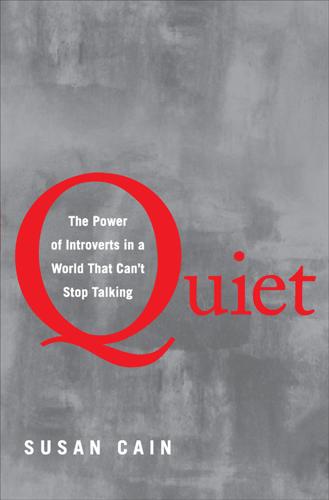
Quiet: The Power of Introverts in a World That Can't Stop Talking
by
Susan Cain
Published 24 Jan 2012
By the time Dale leaves college in 1908, his parents are still poor, but corporate America is booming. Henry Ford is selling Model Ts like griddle cakes, using the slogan “for business and for pleasure.” J.C. Penney, Woolworth, and Sears Roebuck have become household names. Electricity lights up the homes of the middle class; indoor plumbing spares them midnight trips to the outhouse. The new economy calls for a new kind of man—a salesman, a social operator, someone with a ready smile, a masterful handshake, and the ability to get along with colleagues while simultaneously outshining them. Dale joins the swelling ranks of salesmen, heading out on the road with few possessions but his silver tongue.

Saturn's Children
by
Charles Stross
Published 30 Jun 2008
And so, this huge consortium of government-run space agencies got started several centuries ago with a charge to figure out ways and means, and now, even though our Creators are still dead, and we still don’t know quite how to bootstrap a biosphere they can live in, they’re sending out starships to build cities and install indoor plumbing in preparation for their eventual colonization and conquest of the galaxy. Talk about misplaced priorities! The Bark is a hollow cylinder about two kilometers long and four hundred meters in diameter, packed with ice. When it’s time to depart, the beampower stations inside Mercury orbit will point their death rays at it and punch about ten thousand gigawatts of microwaves at the rectenna on its tail.

The American Way of Poverty: How the Other Half Still Lives
by
Sasha Abramsky
Published 15 Mar 2013
Three years after Johnson had launched the War on Poverty, with the country’s attention largely having shifted to the war in Vietnam rather than the domestic “war,” Senator Robert Kennedy would tour the Mississippi Delta and be shocked to see barefoot, malnourished, sickly children living in shanties with no indoor plumbing. By early 1968, as Kennedy campaigned for the Democratic Party’s presidential nomination, his take on poverty’s unrelenting grip on much of America had gone from surprise to shuddering, incandescent horror. I have seen children in Mississippi starving, their bodies so crippled from hunger and their minds have been so destroyed for their whole life that they will have no future.
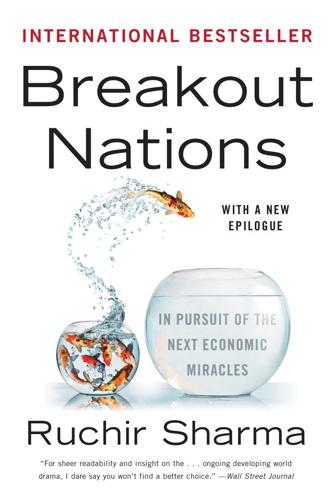
Breakout Nations: In Pursuit of the Next Economic Miracles
by
Ruchir Sharma
Published 8 Apr 2012
Leading skeptics about America’s productivity boom, such as Northwestern University economist Robert Gordon, say the computer and the Internet, even when rendered mobile in handheld devices, do less to raise productivity than inventions from previous technology revolutions—particularly the emergence in the late nineteenth century of electricity, the combustion engine, and indoor plumbing. The technology bulls say we haven’t seen anything yet. Everyone knows that today’s PCs are faster than machines that three decades ago would fill a warehouse. Not everyone is fully aware that the next step—cloud computing—will allow home PCs to tap the computing power of an army of warehouse-size supercomputers.

The Evolution of Everything: How New Ideas Emerge
by
Matt Ridley
The Great Recession of 2008–09 was just a brief blip in global terms: one year when the global economy shrank by less than 1 per cent before growing by 5 per cent the next. By far the lion’s share of this improvement went (and still goes) to ordinary workers and the poor. As McCloskey puts it, although the rich got richer, ‘millions more have gas heating, cars, smallpox vaccinations, indoor plumbing, cheap travel, rights for women, lower child mortality, adequate nutrition, taller bodies, doubled life expectancy, schooling for their kids, newspapers, a vote, a shot at university and respect’. Global inequality is currently falling fast as people in poor countries get richer quicker than people in rich countries.

An Extraordinary Time: The End of the Postwar Boom and the Return of the Ordinary Economy
by
Marc Levinson
Published 31 Jul 2016
More than half of British families owned their own homes by the early 1970s, twice the proportion of 1950 (which helps explain why eight out of ten Britons questioned in 1972 were satisfied with their living conditions). In Rome, quaint bicycles yielded to ear-splitting scooters, which were soon nudged aside by tiny Isetta cars. People in remote French villages installed electric wiring and indoor plumbing. Waves of demand for copper, iron, and other industrial commodities rippled across the world, raising living standards from Brazil to Thailand. Those gains meant not just more income, but also less work and greater opportunity. The average Frenchwoman retired at age sixty-nine in 1950; twenty years later the figure had dropped to sixty-four.
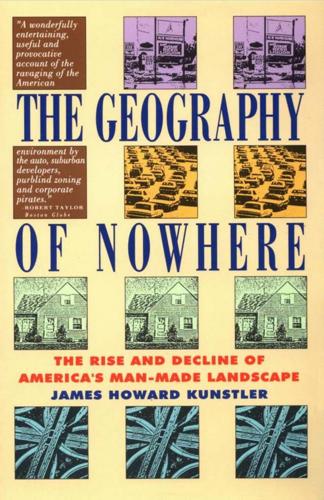
The Geography of Nowhere: The Rise and Decline of America's Man-Made Landscape
by
James Howard Kunstler
Published 31 May 1993
One room schools could be dismally inadequate and hard to get to. A simple trip to the nearest small town might be an ordeal. Henry Ford, himself a Michigan farmboy, had farmers very much in mind when he devel oped the Model T, and they were among his most avid early customers. They emptied their savings accounts and forsook indoor plumbing to buy cars. The Saturday trip to town became an overnight institution all over rural America. Farmers now had regular access to a society beyond their little hill or hollow, to libraries, to popular culture, to ideas besides those in the family Bible. The car also lightened work by serving as a mobile power plant around the farm.

The Future Is Faster Than You Think: How Converging Technologies Are Transforming Business, Industries, and Our Lives
by
Peter H. Diamandis
and
Steven Kotler
Published 28 Jan 2020
For most of history, we didn’t want prepackaged experiences because life itself was the experience. Just staying safe, warm, and fed was adventure enough. Technology changed that equation. At the turn of the Industrial Revolution, the richest people on the planet didn’t have air-conditioning, running water, or indoor plumbing. They lacked automobiles, refrigerators, and telephones. Plus, computers. Today, even folks living below the US poverty line draw on these conveniences. Those better off draw on much more. So much, in fact, that we’ve started to take our stuff for granted. As a result, for many, experiences—tactile, memorable, and real—have become more valuable than possessions.
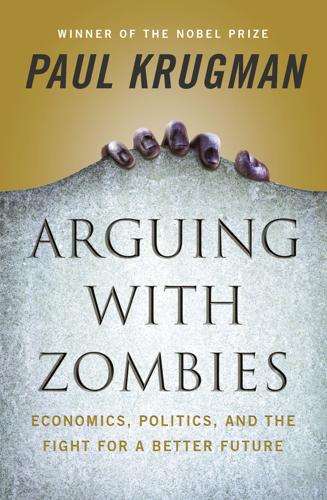
Arguing With Zombies: Economics, Politics, and the Fight for a Better Future
by
Paul Krugman
Published 28 Jan 2020
But what’s behind this divergence? What’s the matter with Trumpland? Regional disparities aren’t a new phenomenon in America. Indeed, before World War II the world’s richest, most productive nation was also a nation with millions of dirt-poor farmers, many of whom didn’t even have electricity or indoor plumbing. But until the 1970s those disparities were rapidly narrowing. Take, for example, the case of Mississippi, America’s poorest state. In the 1930s, per-capita income in Mississippi was only 30 percent as high as per-capita income in Massachusetts. By the late 1970s, however, that figure was almost 70 percent—and most people probably expected this process of convergence to continue.
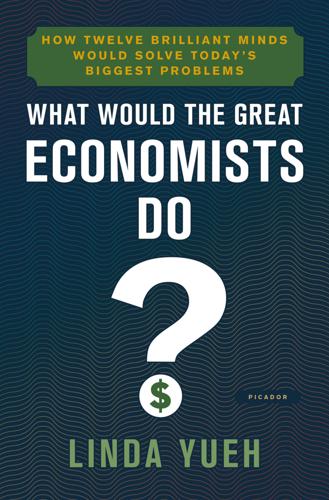
What Would the Great Economists Do?: How Twelve Brilliant Minds Would Solve Today's Biggest Problems
by
Linda Yueh
Published 4 Jun 2018
But, in the empire, most people still lived on farms, while small businesses were losing out to cheaper products from industrializing nations such as America, Germany and Britain. German Austria’s per capita income in 1913 was only about half that of Britain, though twice that of Hungary. Most people had no access to indoor plumbing, clean water or mass-produced shoes and clothing. Telephones and central heating were available only to the wealthy. Austrian bureaucrats still handwrote documents even though typewriters had been in use for twenty years. Because Schumpeter had grown up during a time of vast change, his Harvard student and later economics Nobel laureate Paul Samuelson described him as ‘completely qualified to play the important sociological role of the alienated stranger’.7 * * * After Schumpeter’s father passed away when he was five, he moved with his mother to Graz, where one of the few universities in the Austro-Hungarian Empire was located.

Apollo 8: The Thrilling Story of the First Mission to the Moon
by
Jeffrey Kluger
Published 15 May 2017
For the better part of twelve hours, Borman had been alternating between throwing up and battling the urge to throw up, a fight he often lost. He was also experiencing intermittent episodes of very loose bowels, a symptom that often accompanies this kind of digestive upset. Both problems were extremely difficult to manage in a spacecraft that had no indoor plumbing. Although the commander was going about his work and his voice betrayed nothing, he would be able to carry on that way for only so long. If Borman couldn’t eat food and hold it down, his performance would falter, and eventually he wouldn’t be able to function at all. Already, the sound and smell of his suffering were making the cramped cockpit unbearable for all three men.
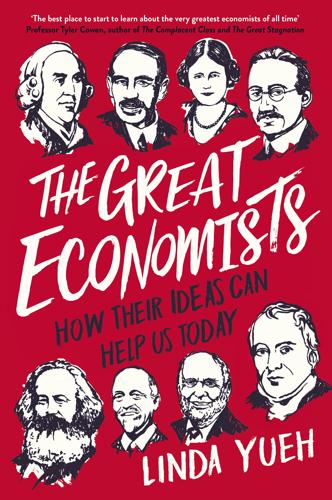
The Great Economists: How Their Ideas Can Help Us Today
by
Linda Yueh
Published 15 Mar 2018
But, in the empire, most people still lived on farms, while small businesses were losing out to cheaper products from industrializing nations such as America, Germany and Britain. German Austria’s per capita income in 1913 was only about half that of Britain, though twice that of Hungary. Most people had no access to indoor plumbing, clean water or mass-produced shoes and clothing. Telephones and central heating were available only to the wealthy. Austrian bureaucrats still handwrote documents even though typewriters had been in use for twenty years. Because Schumpeter had grown up during a time of vast change, his Harvard student and later economics Nobel laureate Paul Samuelson described him as ‘completely qualified to play the important sociological role of the alienated stranger’.7 After Schumpeter’s father passed away when he was five, he moved with his mother to Graz, where one of the few universities in the Austro-Hungarian Empire was located.
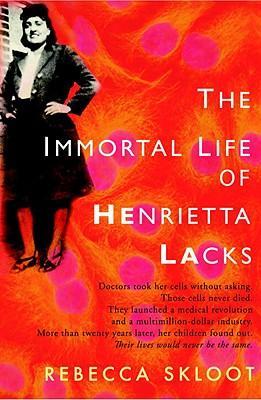
The Immortal Life of Henrietta Lacks
by
Rebecca Skloot
Published 2 Feb 2010
His front door opened into a tiny kitchen with a coffeemaker, a vintage toaster, and an old woodstove with two cooking pots on top, one empty, the other filled with chili. He’d painted the kitchen walls the same dark olive green as the outside, and lined them with power strips and fly swatters. He’d recently gotten indoor plumbing, but still preferred the outhouse. Though Cootie could barely move his arms, he’d built the house on his own, teaching himself construction as he went along, hammering the plywood walls and plastering the inside. But he’d forgotten to use insulation, so soon after he finished it, he tore down the walls and started over again.
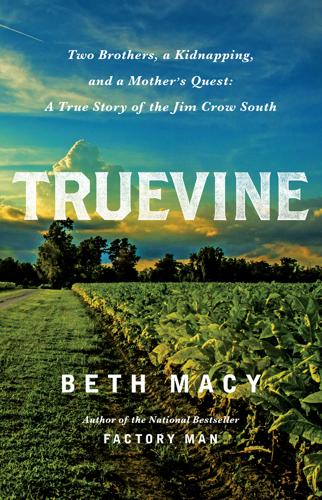
Truevine: Two Brothers, a Kidnapping, and a Mother's Quest: A True Story of the Jim Crow South
by
Beth Macy
Published 17 Oct 2016
It’s made of wood-frame construction and painted white, with four bedrooms upstairs. The year is 1961. And as with all houses in the Rugby section of Roanoke, the deed stipulation on the home has just shifted from whites-only to come-one-come-all. Good-bye, white people. Compared with Harriett’s house in Ballyhack, the Mercer home is a major improvement, with indoor plumbing and electricity, with water that doesn’t have to be fetched from the well. The porch is not rickety, its latticework fully intact. Compared with the shacks in Jordan’s Alley, it’s draft-free and downright palatial. There’s no gaping hole in the wall, no woodstove to feed. Chances are slim that an elderly woman might freeze to death here in her bathrobe, blouses, and boots.
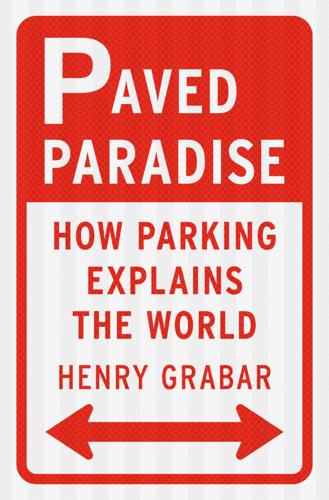
Paved Paradise: How Parking Explains the World
by
Henry Grabar
Published 8 May 2023
Not only did merchants and country folk quickly abandon horsepower in the first few decades of the century; wealthy commuters could drive themselves, ditching the unwashed, the pickpockets, and the bustle pinchers on the trolleys. Americans’ enthusiasm for this new mode of transport was overwhelming and immediate. In 1920s Muncie, Indiana, one woman spoke for a nation when she said she bought a car before she had installed indoor plumbing, because “you can’t go to town in a bathtub.” To try to discourage all-day parkers, cities established time limits. Detroit imposed time limits in 1915; Boston in 1920. New York City restricted parking to twenty minutes on Broadway and other big streets. In downtown Los Angeles, it was forty-five minutes.
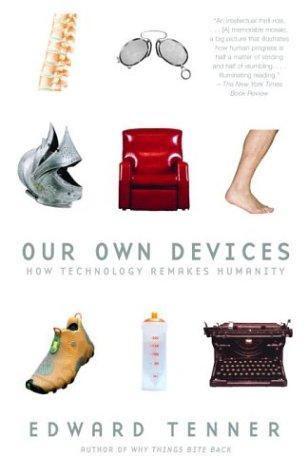
Our Own Devices: How Technology Remakes Humanity
by
Edward Tenner
Published 8 Jun 2004
Tabi, mittenlike socks with separate room for the big toe, were always worn with sandals outdoors, and sometimes with geta. (Some Romans wore a similar woolen or leather foot covering—called a soccus, whence the English word sock —with a leather counterpart of the zori.) Untainted by the dirt of the street, tabi were ideal for indoor wear. After the introduction of indoor plumbing, users of bathrooms stepped into special zori to protect the feet (and living areas) from contamination, a custom that still prevails. The design of the sandals and clogs permitted people to change pairs rapidly without touching the footwear. So strong was this custom that, according to tradition— or perhaps it is a Japanese urban legend—when the first trains opened service in Japan in the late nineteenth century, travelers left their sandals on the platform before boarding and were surprised to find them gone when they returned.21 Luxurious or simple, geta and zori were hygienic, and not just because they were left outside.

Beggars in Spain
by
Nancy Kress
Published 23 Nov 2004
When Mayleen had been hired last winter, Jordan, only four weeks into his own job as Hawke’s personal assistant, had gone with Hawke to her shack for the interview. Although adequately heated and provisioned through the cheap Y-energy that was every citizen’s right under the Dole, the shack had no indoor plumbing, little furniture, and few toys for the skinny tow-headed kids that had stared at Jordan’s leather jacket and lapel comlink. Last week, Mayleen had announced with pride that she’d just bought a toilet and a lace pillow set. The pride, Jordan now knew, was as practical as the toilet. He knew because Calvin Hawke had taught him.

Machines of Loving Grace: The Quest for Common Ground Between Humans and Robots
by
John Markoff
Published 24 Aug 2015
“Many of the inventions that replaced tedious and repetitive clerical labour with computers happened a long time ago, in the 1970s and 1980s. Invention since 2000 has centered on entertainment and communication devices that are smaller, smarter, and more capable, but do not fundamentally change labour productivity or the standard of living in the way that electric light, motor cars, or indoor plumbing changed it.”44 In one sense it was a devastating critique of the Silicon Valley faith in “trickle down” from exponential advances in integrated circuits, for if the techno-optimists were correct, the impact of new information technology should have resulted in a dramatic explosion of new productivity, particularly after the deployment of the Internet.

Merchants' War
by
Stross, Charles
Published 30 Sep 2007
The things we take for granted, she thought, relaxing into the tub: the comforts of a middle-class existence in New Britain seemed exotic and advanced after months of detention in a Clan holding in Niejwein. I could fit in here. She tried the thought on for size. Okay, so domestic radios are the size of a photocopier, and there's no Internet, and they use trains where we'd use airliners. So what? They've got hot and cold running water, and gas and electricity. Indoor plumbing. The chambers Baron Henryk had confined her to had a closet with a drafty hole in a wooden seat. I could live here. The thought was tempting for a moment- until she remembered the thin, pinched faces in the soup queue, the outstretched upturned hats. Erasmus's hacking cough, now banished by medicines that she'd brought over from Boston-her own Boston.

The Rough Guide to Toronto
by
Helen Lovekin
and
Phil Lee
Published 29 Apr 2006
Once an outpost of sorts for cheap suds and pub grub, today the Toad offers much the same but amid the fancy lounges and restaurants that now line King West. The Wheat Sheaf 667 King St W T416/5049912. Streetcar: King (#504). Toronto’s oldest public house, The Wheat Sheaf served its first pint in 1849. In the ensuing century and a half since then, not much has changed – except for indoor plumbing, refrigeration and a television permanently tuned to sporting events. | Uptown Uptown Amber 119 Yorkville Ave, at Bellair St T416/926-9037. Subway: Bay (Bellair exit). Many beautiful and famous people have been spotted sipping martinis at this very of-the-moment spot. Andy Poolhall 489 College St, at Palmerston Ave T416/923-5300.
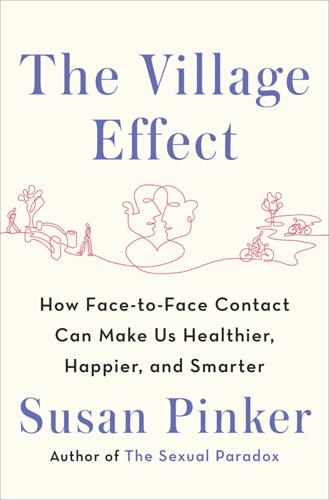
The Village Effect: How Face-To-Face Contact Can Make Us Healthier, Happier, and Smarter
by
Susan Pinker
Published 30 Sep 2013
The researchers noted that teens in low-income families often get less supervision from adults, many of whom are working long hours, and so use their laptops mainly for entertainment: to play games, to chat, and to download music and movies.37 Like a television, laptops can be used as an educational tool. But usually they’re not. Negroponte’s utopian vision was intended primarily for developing economies, where the challenges turned out to be different. Many of the proud new owners of the laptops are children without access to indoor plumbing and electricity. One young American electrical engineer who volunteered with one of the first and biggest OLPC programs, in Peru, noted in his blog that the problems could be big (the kids were often sick) or small (easily broken laptop keyboards), but the accretion of obstacles overwhelmed any educational goals.

The Man From the Future: The Visionary Life of John Von Neumann
by
Ananyo Bhattacharya
Published 6 Oct 2021
Starting from their home in Princeton, they drove across the country in his Buick, von Neumann’s substitute tank that year. ‘He drove at a hundred miles an hour,’ she said. ‘There were just the two of us. We were together a long time and talked a lot.’43 John and Marina von Neumann, aged 11, in Santa Fe. Courtesy of Marina von Neumann Whitman. They stayed in a series of cheap motels, many with no indoor plumbing. When they arrived in Santa Fe, he bought her two silver and turquoise belts made by one of the local Native American tribes. ‘Once we reached Los Alamos, my father exuded boyish enthusiasm as he showed me around those areas I was allowed to enter – all the buildings where bomb-related work was conducted remained strictly off limits,’ she says.
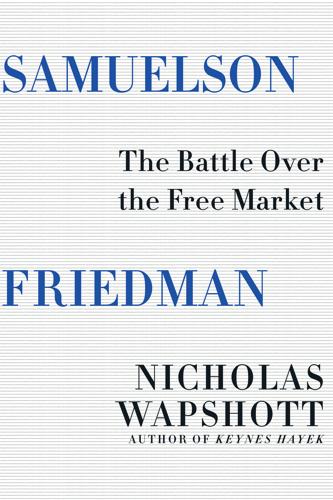
Samuelson Friedman: The Battle Over the Free Market
by
Nicholas Wapshott
Published 2 Aug 2021
8 He appears to have borne his parents no grudge, nor does being raised by Sam and Freda appear to have left any lasting psychological scars. Instead, Samuelson seems to have learned from his brief experience as an orphan. Life on the farm was primitive. “I know what it was like to have no indoor electricity, no indoor central heat, and of course no indoor plumbing. It meant the privy and the chamber pot,” he recalled. “Going shopping in Valparaiso, which was only five miles away, involved harnessing the horse to the buggy and killed most of the morning.”9 Samuelson was a highly intelligent boy who, despite the lack of obvious intellectual stimulation in the farmyard, soon began to devour books from the library.10 He went to the local taxpayer-funded school, which had high standards, and he proved to be smart enough to skip grades.

The Economics Anti-Textbook: A Critical Thinker's Guide to Microeconomics
by
Rod Hill
and
Anthony Myatt
Published 15 Mar 2010
Others reject this and argue for relative approaches such as a definition of poverty as income that is less than half that of the median household.4 (The median household is the middle one in a ranking from richest to poorest.) The justification for using a relative measure of poverty is that ‘necessities’ are cul turally determined. Lack of indoor plumbing or hot water may not be out of the ordinary in a poor country, but it would be in a rich one. Hence, as community standards increase, those left behind experience a feeling of relative deprivation, or poverty, even if they experience no absolute change in their condition. The growing gap between themselves and others causes them to experience ‘social exclusion’ as opposed to ‘social inclusion’.

Billionaires' Row: Tycoons, High Rollers, and the Epic Race to Build the World's Most Exclusive Skyscrapers
by
Katherine Clarke
Published 13 Jun 2023
A member of a cloistered Orthodox Jewish enclave on New York’s Lower East Side, as a child Barnett had lived tightly packed with his nine siblings on the top floor of a low-rise rent-controlled building on Pike Street near the base of the Manhattan Bridge. It was not an unusual arrangement for the neighborhood, which had become a hub of Jewish immigrants from Germany, Poland, and beyond, many of whom lived in crowded tenement buildings that often lacked indoor plumbing and were susceptible to fires. Barnett’s father, Chaim Swiatycki, was born in Poland and moved to the United States from Tel Aviv in 1938 as a student of theology. In New York, he taught at Mesivtha Tifereth Jerusalem, a nearby yeshiva founded in 1907, and became a respected rabbi and Talmudic scholar.

Frostbite: How Refrigeration Changed Our Food, Our Planet, and Ourselves
by
Nicola Twilley
Published 24 Jun 2024
In recent years, a number of economists have attempted to tease out the exact contribution of refrigeration to female employment rates. This has proven challenging, to say the least, because the refrigerator was just one of a host of labor-saving innovations—from washing machines and vacuum cleaners to indoor plumbing—introduced during a short span. The best estimate seems to be that household technologies, including but not limited to the refrigerator, were responsible for up to half of the huge increase in women in the workforce in the twentieth century—although some argue that these analyses ignore the impact of medical advances such as the birth control pill and legal abortion, as well as the fact that the unpaid hours spent on “women’s work” have not decreased so much as shifted focus.

Gorbachev: His Life and Times
by
William Taubman
At its junction with Clara Zetkin Street sits house number 49, built toward the end of the nineteenth century by a landowner named Sergei Bibikov, nationalized and given over to an agricultural institute after the 1917 revolution, then traded in the early 1930s to a man named Grigory Dolinsky in return for his house, closer to the institute, on Tolstoy Street. The two-story house has three windows facing the street. A gate to the right leads into a small courtyard, where the privy, now replaced by indoor plumbing, stands crumbling in the corner. In back, a staircase leads up to the room that was the Gorbachevs’ first home. It is tiny, a mere 120 square feet. A large stove along the south wall for heating the room took up more than 30 square feet. A bed under two east-facing windows had only three legs when Gorbachev moved in; he replaced it with a narrow four-footed frame with steel-mesh netting that settled almost to the floor when they lay down.
…
Former Brezhnev adviser Aleksandr Bovin disclosed in the journal New Times that the Soviet Union was referred to by some foreign critics as “Upper Volta with rockets.” (Today Upper Volta, a small land-locked nation in West Africa, is known as Burkina Faso.) Yevgeny Chazov, Soviet minister of health (and personal physician to Soviet leaders), revealed that 30 percent of Soviet hospitals lacked indoor plumbing. Seminars at the Historical Archives Institute in Moscow leveled charges that in past years could have been made only in private kitchen conversations, the telephone covered with a pillow: Stalinism was a species of totalitarianism on a par with Hitler’s; Nikolai Bukharin, Stalin’s comrade turned victim whom Gorbachev rehabilitated in his anniversary speech, had in fact helped Stalin to power, then betrayed others by confessing to crimes he never committed; Marxist-Leninist philosophy was neither Marxist nor Leninist nor philosophy.
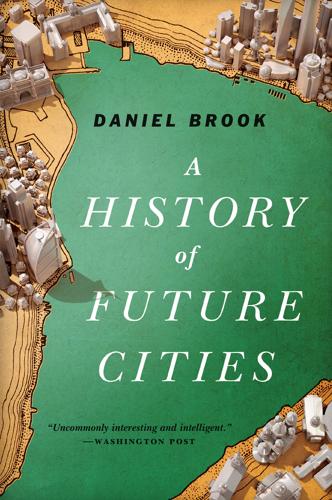
A History of Future Cities
by
Daniel Brook
Published 18 Feb 2013
The Russian capital attained the dubious distinction of having the highest death rate of any major city in Europe by the 1870s. Sanitation was atrocious. An 1870s study of a working-class district found that just one resident in fourteen had access to running water—and it was usually a spigot in a courtyard rather than indoor plumbing. A public health report from the period estimated the amount of human feces piled up in the courtyards of St. Petersburg buildings at thirty thousand tons. Bleak life in the factories and the slums drove men to drink. By 1865, the city had 1,840 taverns, and Petersburgers topped the nation in per capita vodka consumption.

Frommer's Kauai
by
Jeanette Foster
Published 27 Feb 2004
The next year, normal weather returned, and the green pastures withered into sparse semi-desert vegetation. Today, Sinclair’s great-great-grandson, Bruce Robinson, continues to run the ranching operation and fiercely protects the privacy of the island residents. From the outside, life on Niihau has not changed much in 140 years: There’s no running water, indoor plumbing, or electrically generated power. The Hawaiian language is still spoken. Most of the men work for the ranch when there is work, and fish and hunt where there is no work. The women specialize in gathering and stringing pupu Niihau, prized, tiny white seashells (found only on this island), into Niihau’s famous leis, which fetch prices in the thousands of dollars.
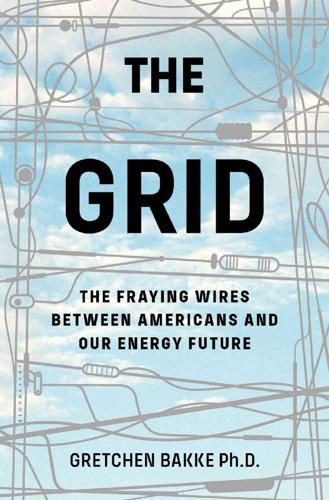
The Grid: The Fraying Wires Between Americans and Our Energy Future
by
Gretchen Bakke
Published 25 Jul 2016
Certainly not everyone was jostled into awareness in the same way, but enough Americans had become interested in systemic change that Carter, an unusual pick, was elected to the highest office in the land. By the time Carter took office, every home in America was its own miraculous technological node, built into a complexly woven support net of wires and pipes and ductwork. By 1976 everyone in America who wanted it had electricity, indoor plumbing, central heating, a refrigerator, and a phone. Our workplaces were similarly well served. Living in these homes and laboring in these workplaces changed us. It only took a generation after the end of the Depression for Americans to become consummately modern individuals, until as a nation we had lost working knowledge of a coal brazier, a kerosene lamp, a latrine, an ice box, a well, a mangler, or anything else more complicated than a switch, a button, an outlet, a socket, a tap, or a flusher.
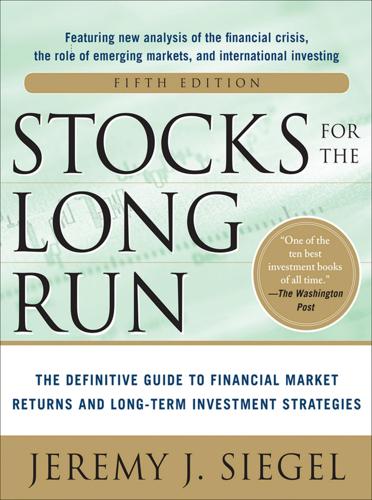
Stocks for the Long Run 5/E: the Definitive Guide to Financial Market Returns & Long-Term Investment Strategies
by
Jeremy Siegel
Published 7 Jan 2014
Although the life-changing innovations cited in the first column of Table 4-1 have long existed in the developed world, the developing world is just beginning to acquire the conveniences of advanced economies. In 2006 the United Nations Human Development Report estimated that 2.6 billion people, or 40 percent of the world’s population, had no indoor plumbing. Electrification, refrigeration, and basic healthcare still elude billions of people. Indeed, a large part of the increase in the world’s income and wealth over the next several decades involves the developing world acquiring the lifestyle that the developed world has long possessed. I do not believe that even the developed world’s productivity is necessarily on a downward path.
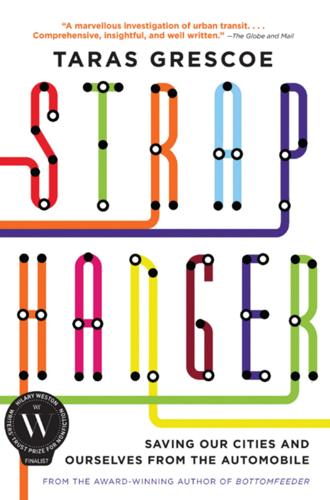
Straphanger
by
Taras Grescoe
Published 8 Sep 2011
The addition of Frederick Law Olmsted’s Central Park—based on the “People’s Garden” in Liverpool, the first public urban park—provided a welcome respite from the gridiron, and more block-sized parks were being created all the time. The wealthy Progressives of the City Beautiful movement successfully lobbied for civic art and enduring public monuments inspired by Classical architecture (and against ads in the subway—a battle they lost). Indoor plumbing, electric lights, and improvements in public health made the city a cleaner, more pleasant place to live. The trend was global: along with the Eixample of Barcelona, the Champs-Elysées in Paris, the Gold Coast in Chicago, the Recoleta in Buenos Aires, and the Bund in Shanghai, Fifth Avenue became a proving ground for the latest manifestations of elegant urbanism.

Predator: The Secret Origins of the Drone Revolution
by
Richard Whittle
Published 15 Sep 2014
Within three more years, the Air Force would also implement Werner’s once-rejected grander vision of flying Predators overseas from brick-and-mortar buildings rather than faux freight containers. In 2005, global Predator operations moved to just such a facility at Indian Springs Auxiliary Airfield, which was renamed Creech Air Force Base. And the structure at Creech was only the first Predator ground control station with indoor plumbing: within half a dozen more years, variations on that facility were being used to fly Predators and Reapers overseas from nearly a dozen other bases in the United States as well. Now Predator and Reaper operators could wage war by day or night and go home to their families after their shift was done, an even stranger way to wage war than the Trailer Park imposed on the Wildfire team.

Multitool Linux: Practical Uses for Open Source Software
by
Michael Schwarz
,
Jeremy Anderson
and
Peter Curtis
Published 7 May 2002
In this chapter, we teach you how to detect the subtle and insidious acts of the typical script kiddie once he gains access to an account on your computer. In the next chapter, we will present a tool that can help you stop the barbarian at the gate so that you don't have to corner him and explain what indoor plumbing is for. A Model of Network Attacks This breakdown of phases in a network-based system compromise is my own taxonomy. I find it a handy way of categorizing the methods attackers use to gain access to a system and to hide their traces. Types of Attack There are two major categories of attacks on network machines.
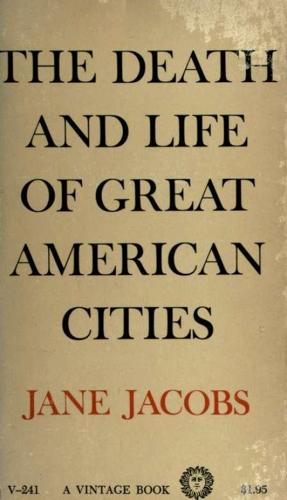
The death and life of great American cities
by
Jane Jacobs
Published 1 Nov 1961
Comments were dropped by Council spokesmen, politely, about the numbers of depositors in the district…the extent of their deposits…the difficulty of understanding why investment of savings by city dwellers seemed so little available for use in cities…the solid concern about the problem within the district…the value of public understanding. Before the meeting was over, several of the lenders pledged their help—that is, favorable consideration of requests for loans. The same day, the Council began negotiating for a site for forty-nine new dwellings. Soon afterward, the most squalid row of slum apartments was equipped with indoor plumbing and otherwise modernized, by means of a $90,000 loan. Within three years, some five thousand houses had been rehabilitated by their owners, and the number rehabilitated since has been so great it has not been kept track of. In 1959, construction of several small apartment houses was begun. The Council, and people within the district, refer to the banks’ interest and cooperation in their improvement with gratitude.
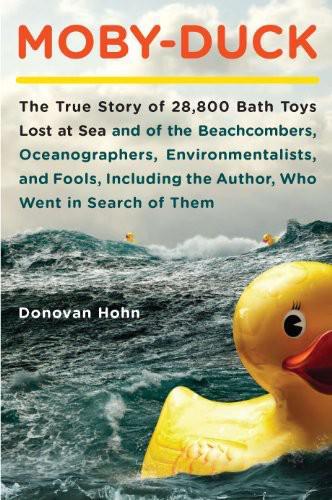
Moby-Duck: The True Story of 28,800 Bath Toys Lost at Sea and of the Beachcombers, Oceanographers, Environmentalists, and Fools, Including the Author, Who Went in Search of Them
by
Donovan Hohn
Published 1 Jan 2010
Three other seemingly unrelated events coincided with the commercialization of childhood and the infantilization of animals: In 1871, a printer from Albany, New York, named John Wesley Hyatt added nitric acid to pulped cotton, thereby inventing celluloid. In 1873, the first Pekin ducks were imported to the United States from China. And in the 1880s, bathtubs began appearing in middle-class homes along with indoor plumbing. Celluloid eventually evolved into the plastics industry. The Pekin duck eventually became the preferred species of American duck breeders, making yellow ducklings a familiar symbol of birth and spring—familiar and far less alien than the Chinese themselves. And the average American bathroom, which had once consisted of a washtub and an outhouse, was consecrated as a temple of cleanliness.
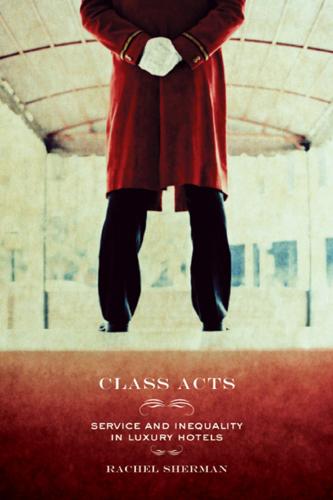
Class Acts: Service and Inequality in Luxury Hotels
by
Rachel Sherman
Published 18 Dec 2006
The Rise of Luxury Hotels The word hotel came into use in the United States in the late eighteenth century to designate taverns and inns that served upper-class clients, a new distinction in hospitality practices.5 The upscale Tremont Hotel, which opened in Boston in 1829, has long been considered the first “modern” hotel in the United States.6 The Tremont and other hotels that followed it during the nineteenth century demonstrated impressive technical achievements in architecture, services, and amenities. In the early years, these included gas lighting, private rooms, and indoor plumbing; later, hotels introduced electricity and elevators to marveling guests. Luxury hotels were defined by their large size, tasteful aesthetics, cleanliness, high-quality food, and prime location, as well as the privacy and security they afforded and service marked by “faultless personal attention.”7 The “highest achievement of the first class hotel” was that “each guest may easily fancy himself a prince surrounded by a flock of courtiers.”8 These “public” institutions were seen to represent modernity, technological innovation, and progress.9 Important social and political figures frequented or even lived in these hotels.10 By the 1930s, personalized service, replacing the earlier obsequious, racialized servitude, had surpassed technological innovation as the key selling point for and main managerial concern in grand hotels such as the Waldorf-Astoria.11 But after midcentury, palace hotels declined in importance.
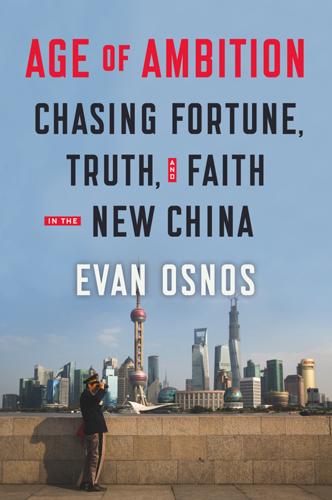
Age of Ambition: Chasing Fortune, Truth, and Faith in the New China
by
Evan Osnos
Published 12 May 2014
In 1980 the city had six thousand hutong; over the years, all but a few hundred were leveled to make way for office buildings and apartment complexes. Only one of the city’s forty-four princely palaces had survived intact. I asked around and found a one-story house for rent at No. 45 Caochang Bei Xiang. Most people in these old homes used a communal public toilet around the corner from my front door. But this house had been fitted with indoor plumbing, and renovated to comprise four modern rooms surrounding a small courtyard that contained a date tree and a persimmon tree. When I reported my new address to the Chicago Tribune’s driver, Old Zhang, he did not approve. “You’re going the wrong direction,” he said. “You should be moving from the ground into an apartment up in the air, not the other way around.”
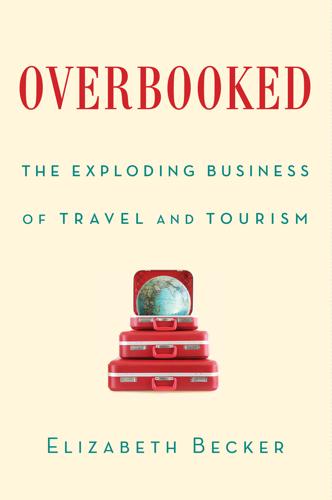
Overbooked: The Exploding Business of Travel and Tourism
by
Elizabeth Becker
Published 16 Apr 2013
The three Washington-area couples I met taking lessons in tai chi were her clients. Their three-week tour took them eventually to Shangri-La in the mountain valleys of Yunnan Province bordering Tibet. They went from the plush comforts of Shanghai to the austere beauty of snowcapped mountains, Buddhist monasteries and no heat or indoor plumbing. They told me they felt as if they had gone from modern to medieval times, the reaction that Zhang cultivates to show old and new China. So far, Zhang has been lucky that her competition is largely from the Chinese government. Most of the thousands of Chinese tour agencies that appear to be independent are owned by the government and focused on serving a mass market.

Lemon Tree: An Arab, a Jew, and the Heart of the Middle East
by
Sandy Tolan
Published 1 Jan 2006
He spoke Arabic and, according to later generations of Khairis, coexisted comfortably among the town's Muslim and Christian Arabs. Ahmad and Mr. Solli designed large living and sleeping quarters separated by double wooden doors in the center. Workers walled off a small bedroom in a corner. They laid tile, hung wire for electric lights, and ran pipe for indoor plumbing. Zakia would have an inside kitchen with a modern stove. Instead of baking her Arabic bread in the taboun, the open-air, wood-fired oven found at most traditional homes, she now had the luxury of sending her dough to the communal ovens in al-Ramla, to be brought back as warm bread ready for the table.

Venice: A New History
by
Thomas F. Madden
Published 24 Oct 2012
Iron bridges were built across the Grand Canal at two new locations, the Accademia and the train station, thus significantly opening up the city to foot traffic. A cholera outbreak in 1867 led to modifications in water flow so as to allow sewage to more easily be flushed out to sea. Water lines were run into Venice from the Brenta Valley, providing indoor plumbing and bringing to an end the rich culture of campo gossip at the pozzo. The Industrial Revolution came to Venice in the form of the Stucky mill on the end of Giudecca. Giovanni Stucky, the son of a Swiss father and a Venetian mother, built the giant flour mill and granary in a classic industrial mode that stylistically defied the city across the canal.
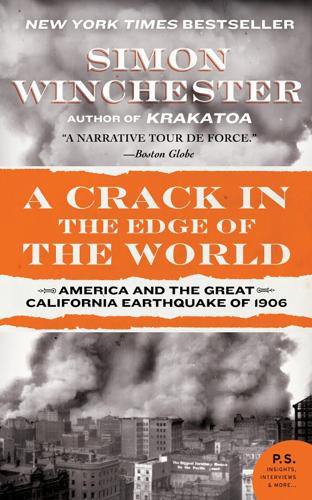
A Crack in the Edge of the World
by
Simon Winchester
Published 9 Oct 2006
The town was filthy in those early days, and known primarily for rats, fleas and piles of empty liquor bottles. Cholera outbreaks were dismayingly frequent, and in the early years it was common for the bodies of the dead to be abandoned by the shore, in the hope that the tides might carry them off into the open sea. There was little by way of indoor plumbing, and the water supply was halting, with what there was invariably polluted. Gas lights had been invented but not installed, and so the city at night was dark and dangerous, crowded and unhealthy – and yet regarded with tolerant fondness by all who looked back on those heady first Gold Rush years.

The Pandemic Century: One Hundred Years of Panic, Hysteria, and Hubris
by
Mark Honigsbaum
Published 8 Apr 2019
It also illustrates how, in certain political and cultural contexts, epidemics that might otherwise have gone unnoticed can command wide public attention and provoke considerable anxiety. L. pneumophila has been around for millennia, but it was not until we began building cities and equipping buildings with indoor plumbing and hot water systems that we presented the bacterium with a new ecological niche in which to prosper. And it was not until we added other luxuries, such as air conditioning, showers, humidifiers, and misters, that we gave the bacterium an efficient way to aerosolize and colonize the human respiratory tract.
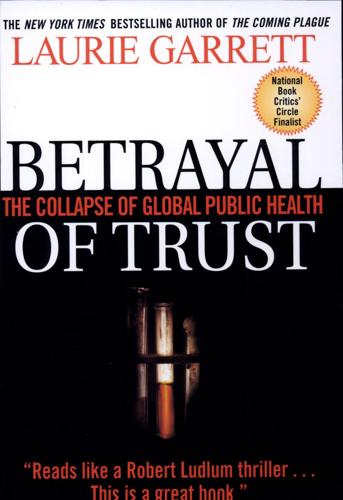
Betrayal of Trust: The Collapse of Global Public Health
by
Laurie Garrett
Published 15 Feb 2000
For the middle class had embraced to an extreme the idea of a germ theory of disease, becoming germ-phobic. While the wealthiest urbanites may have abhorred germs, they could avoid the riffraff or escape to distant estates. The middle class, however, felt trapped. For them, everything from public library books to dust could harbor lethal germs. Germicide sales boomed, as did the installation of indoor plumbing, flush toilets, and modern kitchens that included iceboxes to keep food fresh.57 This germ phobia and resolute commitment to stomping out the bugs ultimately fueled support for grand public health schemes. Because the middle and upper classes were convinced that the poor—particularly immigrants—were the source of all truly terrible microbial scourges, they were willing to pay the price in higher taxes for biological, as opposed to class, warfare.
…
This period marked the beginning of toilet seat phobias, which, in the twentieth century, would extend to include polio and all sexually transmitted diseases, allowing syphilitics to tell their spouses they “got it from a public toilet.” With the appearance of AIDS in the 1980s, toilet seat phobia would also embrace HIV. This is hardly a solely American phenomenon. In the 1990s—one hundred years after the introduction of indoor plumbing—most families living in formerly Soviet countries would deliberately disconnect toilet seats, preferring to squat to avoid alleged contagion. 58. Bellew, “Hygeia.” Harper’s Weekly, vol. 25 (1881): 231. 59. The massive water and sewer projects undertaken in Chicago, for example, are described in Cain, L.
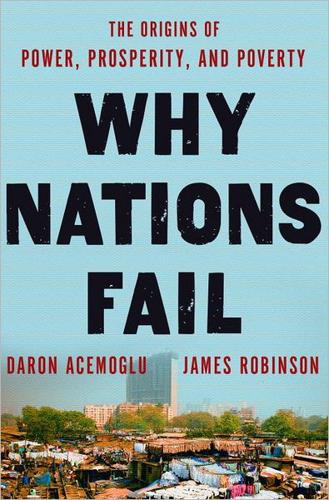
Why Nations Fail: The Origins of Power, Prosperity, and Poverty
by
Daron Acemoglu
and
James Robinson
Published 20 Mar 2012
Sustained economic growth is almost always accompanied by technological improvements that enable people (labor), land, and existing capital (buildings, existing machines, and so on) to become more productive. Think of our great-great-grandparents, just over a century ago, who did not have access to planes or automobiles or most of the drugs and health care we now take for granted, not to mention indoor plumbing, air-conditioning, shopping malls, radio, or motion pictures; let alone information technology, robotics, or computer-controlled machinery. And going back a few more generations, the technological know-how and living standards were even more backward, so much so that we would find it hard to imagine how most people struggled through life.

Turing's Cathedral
by
George Dyson
Published 6 Mar 2012
“I’d take that ticket and give it to the downtown manager in New York, where the Police court was, and he would go around and pay the fine,” says Hurd.48 “He drove like mad and only needed to sleep for three or four hours a night,” says Marina, recalling an early drive across the United States. “Remember, those were 1930s motels in 1946; nothing had been built during the war. Many of them had no indoor plumbing. I had led a sheltered life, and I had never seen an outhouse, except once at camp.” Herman Goldstine, with whom von Neumann occasionally shared hotel rooms while on government assignments, remembers that “he would waken in the night, at two or three in the morning, and would have thought through what he had been working on.

Baghdad at Sunrise: A Brigade Commander's War in Iraq
by
Peter R. Mansoor
,
Donald Kagan
and
Frederick Kagan
Published 31 Aug 2009
The first order of business was to figure out a personal hygiene routine. I quickly discovered that there was little routine to this matter anywhere in Baghdad. Latrines consisted of plywood stalls with metal cans to collect waste, which soldiers burned daily after mixing the foul gruel with the Army’s common fuel, JP-8. The indoor plumbing of the Martyr’s Monument was woefully inadequate and often backed up, creating smelly cesspools in the basement. There were no sinks, and the few showers consisted of solar-heated, gravity-fed water tanks perched atop plywood structures with canvas or plywood dividers. I made a note to centralize hygiene and waste management as a critical task before dysentery and diarrhea brought us to our knees.

The Rise and Fall of Nations: Forces of Change in the Post-Crisis World
by
Ruchir Sharma
Published 5 Jun 2016
Mortgages were rare in these countries as of 2000 but have since become a multibillion-dollar industry, rising from 0 percent of GDP to 7 percent in Brazil and Turkey, 4 percent in Russia, and 3 percent in Indonesia by 2013. This growing role for credit in a developing economy is referred to as “financial deepening.” For countries where people could not buy a car or a house unless they amassed the necessary cash, the introduction of these simple credit products is as important a step into the modern world as indoor plumbing. The public mood and psychology during a time of healthy credit growth bears no resemblance to the anything-goes atmosphere of a credit mania. In place of shady lenders and unqualified borrowers, responsible lenders are widening the choice of solid loan options available to the average Joe or small business, fueling a period of economic growth that is strong but not too strong to last.

There Is Nothing for You Here: Finding Opportunity in the Twenty-First Century
by
Fiona Hill
Published 4 Oct 2021
Granny suffered from crippling arthritis, and Grandad had Parkinson’s, which got steadily worse. Until the local government’s housing authority did renovations in the early 1970s, their row house, part of a subsidized development that had originally been built for local workers and their families, had no “mod cons” (modern conveniences), including indoor plumbing. They needed help physically as well as economically. When I was old enough, Dad took me on the bus to stay with my grandparents or sent me on my bike to fill in for him. It was eight miles or so, depending on the route you took, but even covering that short distance up narrow back roads could be an adventure.

The Barbell Prescription: Strength Training for Life After 40
by
Jonathon Sullivan
and
Andy Baker
Published 2 Dec 2016
The bottom of the squat is the position people all over the world and throughout history assume for working, eating, voiding, talking, and having babies. The ability to squat below parallel and stand up again is fundamental to human physical existence even in cultures that have recliners and indoor plumbing, because the inability to get up from a chair or toilet can have significant negative implications for one’s quality of life. Essentials of Performance When you learn the squat properly, on your own or under the instruction of a qualified coach, you should undergo the standard teaching progression, which starts without the bar.
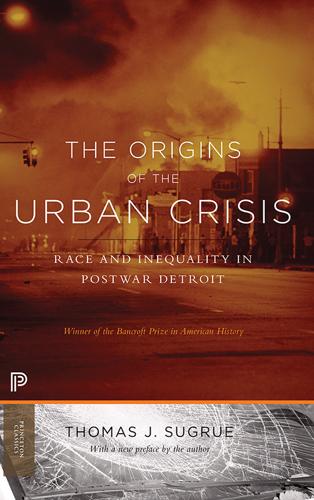
The Origins of the Urban Crisis
by
Sugrue, Thomas J.
More than 90 percent of the buildings on the Gratiot site were occupied by renters who paid an average of $19 per month in 1946, by far the lowest rents in the city. Landlords compensated for low rents by subdividing buildings and packing families into small, cramped apartments. More than half of the buildings in the neighborhood had substandard facilities and no indoor plumbing, or were classified as fire and safety hazards. But redevelopment did not ameliorate the living conditions of the impoverished residents of sites slated for slum clearance. The most obvious problem with slum clearance was that it forced the households with the least resources to move at a time when the city’s tight housing market could not accommodate them.

Bill Marriott: Success Is Never Final--His Life and the Decisions That Built a Hotel Empire
by
Dale van Atta
Published 14 Aug 2019
Little Willard became her nursemaid while she was bedridden, fetching whatever his mother needed.5 A big change occurred in 1905, when the family moved to the “grand estate.” Owned by an Ogden racehorse breeder, it was the showplace of Marriott—100 acres of lush pasture with a two-story house, a twenty-stall barn, and a high white fence around the entire property. Even without indoor plumbing or electricity, the new house was considered a mansion by the townspeople. Will and Ellen’s fourth child, Eva, was the first to be born there, followed by Paul and Kathryn (“Kay”). Ellen was pregnant with her seventh child when Helen and Eva, playing with matches, started a fire that burned down the mansion.
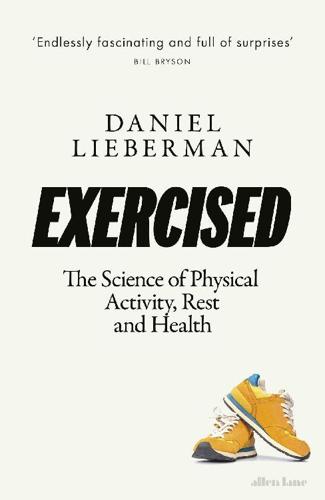
Exercised: The Science of Physical Activity, Rest and Health
by
Daniel Lieberman
Published 2 Sep 2020
The anthropologist Thom McDade has shown that people who grow up in these sorts of evolutionarily “normal,” unsterile environments have different inflammatory immune responses from those of us who grew up with high levels of sanitation. When humans who grew up in pathogen-rich conditions get an infection, their inflammatory response is sudden, strong, but short-lived. In contrast, the immune systems of people who grew up in highly hygienic environments with dishwashers, indoor plumbing, bleach, and lots of soap are different. When they get an infection, their inflammatory response tends to be much slower and less intense and lasts much longer. In other words, too much hygiene, especially when we are young, may predispose us to more chronic inflammation as we age. Then when we sit too much, we become more susceptible to persistent, low-grade inflammation.

American Gun: The True Story of the AR-15
by
Cameron McWhirter
and
Zusha Elinson
Published 25 Sep 2023
BAD BOYS They weren’t members of our club. —Gun industry executive on companies making civilian AR-15s The highlight of Dick Dyke’s youth came when he learned an entire tap-dance routine from the legendary Gene Kelly at a dance convention at Radio City Music Hall. Dyke had grown up in a house with no indoor plumbing in the mill town of Wilton, Maine. He saw music, theater, and dancing as his escape. He was accepted to an acting and dance school in New York City. But his parents, a wool factory worker and a policeman, refused to pay. So Dyke went to Husson University in Bangor, to study business. After college, Dyke embarked on a successful career in salvaging failing businesses, from lumber companies to accounting firms.

Thank You for Being Late: An Optimist's Guide to Thriving in the Age of Accelerations
by
Thomas L. Friedman
Published 22 Nov 2016
The economist Robert Gordon has made a compelling case in his book The Rise and Fall of American Growth: The U.S. Standard of Living Since the Civil War that the days of steadily rising growth are probably behind us. He believes all the big gains were made in the “special century” between 1870 and 1970—with the likes of automobiles, radio, television, indoor plumbing, electrification, vaccines, clean water, air travel, central heating, women’s empowerment, and air-conditioning and antibiotics. Gordon is skeptical that today’s new technologies will ever produce another leap forward in productivity comparable to that special century. But MIT’s Erik Brynjolfsson has countered Gordon’s pessimism with an argument I find even more compelling.
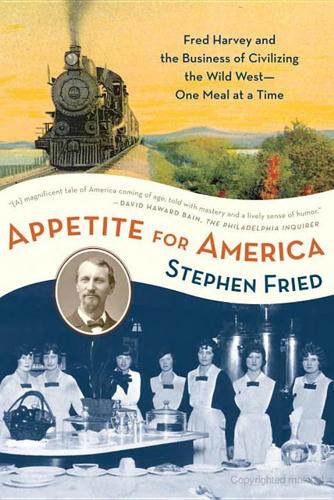
Appetite for America: Fred Harvey and the Business of Civilizing the Wild West--One Meal at a Time
by
Stephen Fried
Published 23 Mar 2010
With Phillips in place, Fred expanded the Florence hotel and restaurant even further, adding not only more dining space but also offices, hotel rooms, and large “sample rooms” where traveling salesmen could show their lines to local customers. He also gave the place a proper name; instead of the Santa Fe depot hotel and eating house, it would now be known by the more elegant appellation “The Clifton.” Fountains and a new sign were installed out front; inside were luxuries Florentines had yet to enjoy—even indoor plumbing. “Every Tuesday and Friday, the ladies of Florence can have use of the bath rooms at The Clifton Hotel,” the Herald proudly announced. “This will be a luxury which will be duly appreciated. All other days the bath rooms are open to gentlemen.” CHAPTER 9 COWBOY VICTUALER LAKIN, KANSAS, WAS ONE OF MANY DUSTY WESTERN TOWNS willed into being by the arrival of the railroad.

Termites of the State: Why Complexity Leads to Inequality
by
Vito Tanzi
Published 28 Dec 2017
However, it was a period of still relatively limited direct governmental interference in the activities of markets and in the lives of citizens. The growth of the economies had been spurred by the deepening impact of the Industrial Revolution (see Gordon, 2015), which had introduced major new technologies (railroads, electricity, steamships, cars, indoor plumbing, new ways of producing clothes, machines to produce many manufactured goods, petroleum as a source of energy, and so on) that were changing the world in truly radical ways. That revolution required huge investments, and was accompanied by an accelerating process of urbanization. It was fed by large migratory movements, both within countries (from rural areas to the new urban centers, where the industrial enterprises were being set up) and between countries, toward new and still largely underpopulated countries.

Moon Oregon Trail Road Trip: Historic Sites, Small Towns, and Scenic Landscapes Along the Legendary Westward Route
by
Katrina Emery
and
Moon Travel Guides
Published 27 Jul 2020
Find free parking for the museum on its north side. The G.W. Frank Museum of History and Culture (2010 University Dr., 308/865-8284, www.unk.edu, 1pm-5pm Tues.-Fri., noon-5pm Sat.-Sun., free) is in a house built in the unique Richardsonian Romanesque Shingle style, among the first to get electricity and advanced indoor plumbing on the wild frontier. Later the house was used as a sanitarium and housing for the Nebraska State Tuberculosis Hospital staff. Today, tours of the richly decorated interior include a look at the artifacts inside, including a grand piano, hand-carved woodwork, original fireplaces from the 1880s, beautiful stained-glass windows, and hand-blown Italian glass chandeliers.
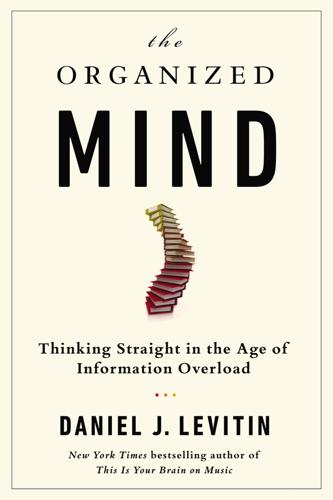
The Organized Mind: Thinking Straight in the Age of Information Overload
by
Daniel J. Levitin
Published 18 Aug 2014
Our attics, garages, basements, and the junk drawers in our kitchens are in such a state that we hope no one we know ever takes a peek inside of them, and we fear the day we may need to actually find something there. These are obviously not problems that our ancestors had. When you think about what your ancestors might have lived like a thousand years ago, it’s easy to focus on the technological differences—no cars, electricity, central heating, or indoor plumbing. It’s tempting to picture homes as we know them now, meals more or less the same except for the lack of prepackaged food. More grinding of wheat and skinning of fowl, perhaps. But the anthropological and historical record tells a very different story. In terms of food, our ancestors tended to eat what they could get their hands on.

Facebook: The Inside Story
by
Steven Levy
Published 25 Feb 2020
Rejected from Facebook, they would create a product that was so compelling that Mark Zuckerberg had to back up the Brink’s trucks to buy it. Koum had been sixteen years old when he and his mother had fled the anti-Semitism of their native Kiev for Mountain View, California. It was 1992. Koum had been poor in Ukraine—his school didn’t have indoor plumbing—and his small family struggled in the New World, living in subsidized housing and subsisting with the help of food stamps. America had its own challenges, especially when Koum’s mother got cancer. Koum, never a big fan of authority figures, got interested in computers and joined an online hacker group.

Doomsday Book
by
Connie Willis
Published 1 Jan 1992
She sat, her bare legs dangling over the side of the high bed, waiting for it to pass. She was wearing her linen shift and nothing else. She wondered where her clothes were. At least they had let her keep her shift. People in the Middle Ages didn’t usually wear anything to bed. People in the Middle Ages didn’t have indoor plumbing either, she thought, and hoped she wouldn’t have to go outside to a privy. Castles sometimes had enclosed garderobes, or corners over a shaft that had to be cleaned out at the bottom, but this wasn’t a castle. The young woman put a thin, folded blanket around Kivrin’s shoulders like a shawl, and they both helped her off the bed.
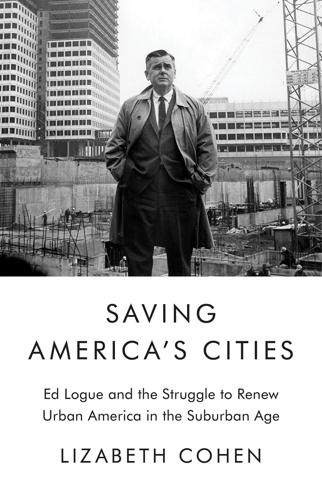
Saving America's Cities: Ed Logue and the Struggle to Renew Urban America in the Suburban Age
by
Lizabeth Cohen
Published 30 Sep 2019
A very partial list includes a major $60 million facelift to the old, depressed Hudson River town of Newburgh; construction of six thousand units of housing in metropolitan Rochester, half of them low income and on scattered sites in the suburbs; an expansive low-and-moderate-income residential project, the Shoreline Apartments, with a school and shops along Buffalo’s Lake Erie, designed by Paul Rudolph; Schomburg Plaza, located at 5th Avenue between West 110th and 111th Streets in Harlem, consisting of two award-winning thirty-five-story octagonal apartment towers with six hundred mixed-income units, stores, and a day care center, developed in collaboration with the prominent black psychologist and UDC board member Kenneth Clark and his wife, Mamie Phipps Clark; new housing and a convention-tourism complex to help buoy the off-season economy of Niagara Falls; remediation and future planning for six upstate communities in the Chemung River Valley devastated by Hurricane Agnes in June 1972; and the replacement of dilapidated shacks without indoor plumbing in a migrant labor camp in Kent, Orleans County, with the townhouse apartments of Carlken Manor.55 The UDC’s most ambitious and innovative undertaking was the creation of three New Towns on undeveloped land—Audubon, in Amherst, near the new campus of SUNY Buffalo; Lysander, renamed Radisson, twelve miles north of Syracuse; and the transformation of Welfare Island into Roosevelt Island in New York’s East River.

Frommer's Oregon
by
Karl Samson
Published 26 Apr 2010
Bush House Museum Set at the top of a shady hill in the 100-acre Bush’s Pasture Park, this imposing Italianate Victorian home dates back to 1878. Inside you can see the original furnishings, including 10 fireplaces and the original wallpaper. At the time it was built, this home had all the modern conveniences—indoor plumbing, gas lights, and central heating. Also on the grounds is Oregon’s oldest greenhouse conservatory. S A L E M & T H E M I D W I L L A M E T T E VA L L E Y 17 Owens St. Portland Salem OREGON Stat e St. WILLAMETTE UNIVERSITY Chu rch S t. Lesli e St. Kearny St. Wilson Park 11 10 Trad e St.
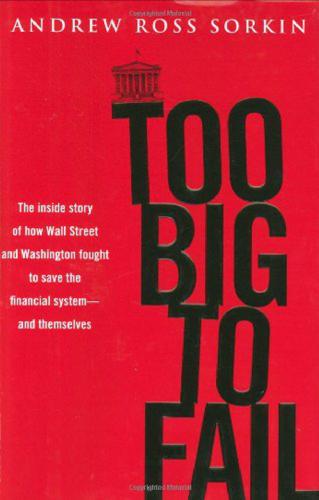
Too big to fail: the inside story of how Wall Street and Washington fought to save the financial system from crisis--and themselves
by
Andrew Ross Sorkin
Published 15 Oct 2009
O’Neal was out of a different mold than most of Merrill’s top executives, not least of all because he was African American—quite a change from the succession of white Irish Catholics who had headed the firm in the past. His was, by any measure, an amazing success story. O’Neal, whose grandfather had been born a slave, had spent much of his childhood in a wood-frame house with no indoor plumbing on a farm in eastern Alabama. When Stan was twelve, his father moved the family to a housing project in Atlanta, where he soon found a job at a nearby General Motors assembly plant. GM became Stan O’Neal’s ticket out of poverty. After high school he enrolled at the General Motors Institute (now known as Kettering University), an engineering college, on a work-study scholarship that involved his working six weeks on the assembly line in Flint, Michigan, followed by six weeks in the classroom.

The Warmth of Other Suns: The Epic Story of America's Great Migration
by
Isabel Wilkerson
Published 6 Sep 2010
He recounted what his mother told him: “You’re going to have to leave this place, you keep that up.” Which is why Marshall ended up in California. Then Robert joins in. “I had taken my bath in the tin tub,” he begins. “I was clean.” “Was that the Saturday-night bath?” Beckwith’s wife, Isabel, asks. Everyone laughs in recognition. Like most black people in the South, none of them had had indoor plumbing back then, and Saturday was the one night in the week when they could manage the time-consuming ritual of boiling water from the well and filling a tin tub so everyone in a given family could take a bath. They knew just what Robert meant. They let him finish his story. “A white man called me over,” Robert goes on. “ ‘Hey, boy, I’ll pay you if you can tell me where I can find a clean colored girl.’ ” He pauses for effect.

The Taste of War: World War Two and the Battle for Food
by
Lizzie Collingham
Published 1 Jan 2011
Farm incomes rose by 156 per cent.10 ‘As farm prices got better and better … farm times became good times,’ recalled Laura Briggs, raised on a small farm in Idaho in the 1930s and 1940s. ‘Dad started having his land improved, and of course we improved our home and the outbuildings. We and most other farmers went from a tarpaper shack to a new frame house with indoor plumbing. Now we had an electric stove instead of a wood burning one, and running water at the sink where we could do the dishes; and a hot water heater; and nice linoleum … It was just so modern we couldn’t stand it.’11 The war also provided a painless solution to the problem of agricultural unemployment, caused by the Depression.

Parks Directory of the United States
by
Darren L. Smith
and
Kay Gill
Published 1 Jan 2004
Activities: Guided house tour. Special Features: The Lapham-Patterson House is an outstanding example of a Victorian era home. Built between 1884-85 as a winter cottage for prosperous shoe merchant C.W. Lapham of Chicago, the residence was equipped with its own gas lighting system, hot and cold running water, indoor plumbing, and modern closets. Architectural features include fishscale shingles, oriental-style porch decorations, long-leaf pine inlaid floors, cantilevered balcony, and a double-flue chimney with a walk-through stairway. Lapham-Patterson House was named a National Historic Landmark in 1975. of I-75 Forsyth exit 185; or 18 miles north of Macon exit 171.
…
Special Features: Harry Truman, the only Missourian ever elected US president, was born here on May 8, 1884. Truman’s family stayed in the six-room frame home, built between 1880 and 1882, until Harry was almost one year old. Furnishings represent those typically found in homes during the period when the Trumans lived here. In addition to the house, which had neither indoor plumbing nor electricity, visitors can view the smokehouse, well, and outhouse in the back. ★3007★ HARRY S TRUMAN STATE PARK 28761 State Park Rd Warsaw, MO 65355 Web: www.mostateparks.com/trumanpark.htm Phone: 660-438-7711 Size: 1,440 acres. Location: West of Warsaw 6 miles on Highway 7, then right on Highway UU 2 miles to the park, in Benton County.
…
Normally located in isolated areas of the park, sites have drinking water and pit or flush toilets. T Yurts — Mongolian-style round tents on a wooden deck; contain cookstove, refrigerator, countertop, table, chairs, electric heat and outlets. Sleep four. T Rustic cabins — Include refrigerator and gas or electric kitchen stove. Each has a fireplace, wood stove or gas heater for heat. No indoor plumbing. Sleep two to eight people. ★3974★ BALD EAGLE STATE PARK 149 Main Park Rd Howard, PA 16841 Web: www.dcnr.state.pa.us/stateparks/parks/baldeagle.asp Phone: 814-625-2775 Size: 5,900 acres. Location: Off PA 150, midway between Milesburg and Lock Haven, via I-80. Facilities: 101 class A campsites, 70 class B campsites, showers, flush toilets, picnic 744 PENNSYLVANIA ★3978★ BIG POCONO STATE PARK c/o Tobyhanna State Park Tobyhanna, PA 18466 Web: www.dcnr.state.pa.us/stateparks/parks/bigpocono.aspx Phone: 570-894-8336 Size: 1,306 acres.

USA's Best Trips
by
Sara Benson
Published 23 May 2010
Adventurous souls who don’t mind heights or rustic living will appreciate the elegant hand-hewn stairway and deck, burl furniture, picture windows, Vermont Castings wood stove and a fire pole for dramatic exits. Advance reservations are essential. Note that there’s limited, generator-powered electricity and no indoor plumbing, although guests have access to a bathroom with running water at the base of the tree. Those seeking a more traditional sleeping experience can continue 7 miles east to St Johnsbury. * * * Late-summer travelers with a weakness for weird should check out the Great Vermont Corn Maze (www.vermontcornmaze.com), a seasonal operation 9 miles north of Hwy 2, reached from the town of Danville west of St Johnsbury.

Lonely Planet Washington, Oregon & the Pacific Northwest
by
Lonely Planet
Stevens-Crawford House MuseumMUSEUM (%503-655-2866; www.clackamashistory.org; 603 6th St; adult/child $5/3; hnoon-4pm Fri & Sat) F For a taste of the past, step into this historic museum. Owned by a pioneering family, the 1908 house still boasts most of its original furniture and other possessions, plus innovative (at the time) electric light fixtures, indoor plumbing and central heating. 2Activities eNRG KayakingKAYAKING (%503-772-1122; www.enrgkayaking.com; 1701 Clackamette Dr; classes per person $40, rentals per hour $25-30; hnoon-5pm Wed-Sun late Mar-late May, 9am-7pm daily late May-late Sep) This outfitter offers kayak rentals, instruction and tours, plus stand up paddling (SUP) on the Willamette River. 6Drinking & Nightlife Highland StillhousePUB (%503-723-6789; www.highlandstillhouse.com; 201 S 2nd Ave; h11am-midnight Tue-Sat, to 10pm Sun) This fun pub, with great outdoor seating overlooking the Willamette Falls, claims to have the largest selection of single malts in the Portland area.

Why the West Rules--For Now: The Patterns of History, and What They Reveal About the Future
by
Ian Morris
Published 11 Oct 2010
Never had it so good: the author and his toys, Christmas Day, 1964 Suburbs and satellite cities unfolded around every exit ramp and bypass, from America’s Levittown to Britain’s Telford, offending the aesthetes with their boxiness and monotony; but they gave the people what we wanted—a little space, indoor plumbing, and garages for our shiny Fords. The twentieth century was the age of everything, of material abundance beyond the dreams of avarice. Cheap coal and oil generated electricity for all, turning on engines and lighting up houses at the flick of a switch. More than two thousand years earlier Aristotle had observed that slaves would always be with us, unless people had automata—self-moving machines—to do the work for them.

Dirty Wars: The World Is a Battlefield
by
Jeremy Scahill
Published 22 Apr 2013
When his father died, he left his life of safety and comfort to return to Mogadishu, where he was given the title of minister of state for the presidency. Noor, however, still enjoyed the luxuries of the West. He rolled around Mogadishu in an armored SUV with animal skins over the seats. He set up a wireless Internet network in an ASWJ camp outside of the capital that didn’t have indoor plumbing and his Koran was housed in a shiny new iPad. He showed me an e-mail from Ethiopia’s minister of foreign affairs on his recently acquired white iPhone. Noor, who regularly met with Western officials and intelligence agents, declined to outline who exactly was funding ASWJ from the outside, but he did single out the United States as Somalia’s “number one” ally.

Before the Storm: Barry Goldwater and the Unmaking of the American Consensus
by
Rick Perlstein
Published 17 Mar 2009
Nixon had been working for this moment, sweating for it, slaving for it, cringing for it, bowing and scraping for it, since—since when? Since he was denied the chance to go to Harvard because he could only afford to live at home; since he was blacklisted from Whittier College’s one social club because he was too poor; since he was reduced to sharing that one-room shack without heat or indoor plumbing with four fellow students while working his way through Duke Law and finished third in his class; since he begged Los Angeles’s plutocrats, Navy cap in hand, for their sufferance of his first congressional bid; since he trundled across California in his wood-paneled station wagon to bring his Senate campaign “into every county, city, town, precinct, and home in the state of California”; since he was forced to plead cloth-coated poverty on television to keep his spot as vice-presidential candidate in 1952; since his vice-presidential career was interrupted every off year when he hit the road to campaign for other Republicans, pounding whiskey in the back rooms when his companions pounded whiskey, drinking juice in church basements when his companions drank juice.

Southwest USA Travel Guide
by
Lonely Planet
The Utah portion of the park contains all the fossils, but the Canyon Section Visitor Center (970-374-3000; www.nps.gov/dino; Dinosaur, CO; per car $10; 9am-4pm Jun-Aug, 8am-4:30pm Wed-Sun Sep & May) shows a good movie and there are pretty hikes. Staying over? Pitch your tent at the waterfront Green River Campground (Dinosaur Quarry; campsites $12; mid-Apr–Oct); first-come, first-served. The 88 sites have access to running water (indoor plumbing and the river), but no showers. Ask about primitive camping. If you’d rather a roof over your head, book at the comfy-cozy Jensen Inn (435-789-590; 5056 S 9500 East, Jensen; r incl breakfast $95-150; ), 3 miles north of the Hwy 40 turnoff on Hwy 149. Sleep in a tipi ($95) or camp ($55) on the grounds and you can still get the scrumptious home-cooked breakfast.

Frommer's Hawaii 2009
by
Jeanette Foster
Published 2 Jan 2008
The next year, normal weather returned, and the green pastures withered into sparse semidesert vegetation. Today Sinclair’s great-great-grandson, Bruce Robinson, continues to run the ranching operation and fiercely protects the privacy of the island residents. Life on Niihau has not changed much in 140 years: There’s no running water, indoor plumbing, or electric power. The Hawaiian language is still spoken. Most of the men work for the ranch when there is work, and fish and hunt when there is no work. The women specialize in gathering and stringing pupu Niihau, prized tiny white seashells (found only on this island), into Niihau’s famous leis, which fetch prices in the thousands of dollars.

The Coming Plague: Newly Emerging Diseases in a World Out of Balance
by
Laurie Garrett
Published 31 Oct 1994
“It seems, then, that ambilateral harmfulness may have a significant bearing on the ‘emergence’ of ‘new’ infectious diseases … because the ability of a plant microbe to harm an animal (or vice versa) in any manner whatsoever would seem to indicate that the ‘emergence’ of a ‘new’ pathogen is not far off!” The CDC estimated that somewhere between 2,000 and 6,000 people had been dying every year of Legionnaires’ Disease, probably for decades, certainly since the advent of air-conditioning technology and, long before that, indoor plumbing. Prior to the dramatic Philadelphia outbreak, these cases had simply been dumped into the category of “pneumonia of unknown etiology.” Armed with such observations, medical historian Robert Hudson of the University of Kansas closed the international gathering on a particularly frightening note.
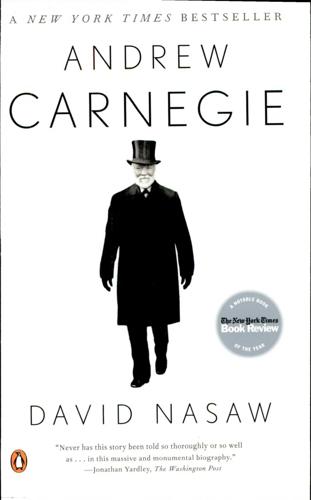
Andrew Carnegie
by
David Nasaw
Published 15 Nov 2007
The piper had barely time to get into his Highland garb, and the organist, who had been in the swimming pool, just managed to scramble into his clothes and strike up ‘God Save the King’ as the royal guest appeared.”2 The king, who was in the process of remodeling Buckingham Palace, had come to see how Carnegie had managed to incorporate all the modern amenities—including electric lighting and indoor plumbing—into his castle design. He stayed for tea, which he took American-style with lemon, greatly pleasing Louise, who also took her tea without milk or cream. Five-and-a-half-year-old Margaret was presented and, though she forgot to curtsey, triumphed nonetheless. “I had been naughty,” Margaret recalled seventy years later, “and as usual on such occasions, after Mother had talked to me, I was sitting alone in the upstairs sitting room to think matters over until I was ready to say I was sorry.

Greece Travel Guide
by
Lonely Planet
XyloskaloCRETAN€ ( GOOGLE MAP ; %28210 67237; www.omalos.com; dishes €5-10; h10am-7pm or 8pm daily Apr-Oct, Sat & Sun Nov-Mar; W) Perched just over the spectacular drop of Samaria Gorge, with eagles occasionally circling outside its wrap-around windows, this cosy restaurant dishes up classic Cretan and Greek meals. And offers that last chance to use indoor plumbing and wi-fi. GETTING THERE & AWAY Most people hike the gorge one way going north–south on an organised day trip from every sizeable town and resort in Crete. Note that prices listed usually don’t include the €5 admission to the gorge or the boat ride from Agia Roumeli to Sougia or Hora Sfakion.
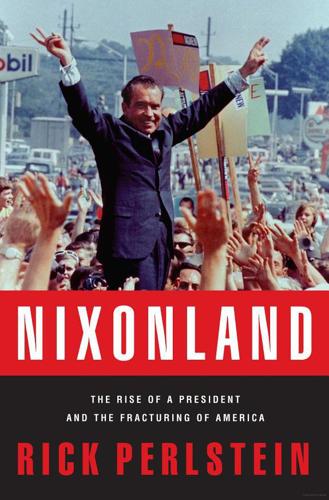
Nixonland: The Rise of a President and the Fracturing of America
by
Rick Perlstein
Published 1 Jan 2008
From the time he was a boy in the Southern California citrus groves, staying up half the night to man the creepy little potbellied orchard heaters that kept the frost from the trees but not the black smudge from the boy tending them, to stain his clothes for school the next day; from the time his father built a combination grocery and gas station and made it his second son’s duty to begin each day in the dark, at 4 a.m., driving to the Los Angeles market to select the day’s produce; from the time he was denied a chance to go to Harvard because he could only afford to live at home; from the time he was blacklisted from his little local college’s single social club because he was too unpolished; from the time he was reduced to sharing a one-room shack without heat or indoor plumbing while working his way through Duke Law School; from the time, finishing third in his class, he trudged frantically from white-shoe Wall Street law firm to white-shoe Wall Street law firm and was shown the door at each one (he ended up practicing law back home, where, forced to handle divorce cases, he would stare at his shoes, crimson-red in embarrassment, as women related to him the problems they suffered at the marital bed).

Frommer's California 2007
by
Harry Basch
,
Mark Hiss
,
Erika Lenkert
and
Matthew Richard Poole
Published 6 Dec 2006
Grant Grove Cabins Value Although all the accommodations here are cabins, they offer a wide range of amenities and prices, from handsomely restored cabins that ooze history, with private bathrooms, to primitive tent-cabins that simply provide a comfortable bed and shelter at a very low price. Those who want to “rough it” in style should reserve one of the nine cabins, built in the 1920s, that have electricity, indoor plumbing, and full private bathrooms. A bit less modern, but still quite comfortable, the 43 basic cabins have kerosene lanterns for light and a shared bathhouse. Some are wooden; others, available in summer only, have wood floors and walls but canvas roofs. All cabins have full linen service. It’s a 10-minute walk from the cabins to the Grant Grove visitor center, and the Grant Grove Restaurant is also nearby.

Frommer's Mexico 2008
by
David Baird
,
Juan Cristiano
,
Lynne Bairstow
and
Emily Hughey Quinn
Published 21 Sep 2007
. $233–$255 (£128–£140) garden and pool view; $306–$373 (£168–£205) beachfront and ocean view. AE, MC, V. Free parking. Amenities: Restaurant; outdoor pool; spa; tour info; car rental. In room: A/C in some rooms, safe, no phone. Azulik is all about slowing down, leaving civilization behind (except for such niceties as indoor plumbing and room service), and enjoying the simple life (with or without clothes). I enjoyed the simple life during an all-too-brief stay here, and what I liked most about Azulik was the design and positioning of the individual cabañas. All but three of them sit on a stone ledge next to, and a little above, the sea.

The Snowball: Warren Buffett and the Business of Life
by
Alice Schroeder
Published 1 Sep 2008
Born in West Germany in 1946 as Astrid Beaté Menks after her parents “walked out of Latvia when Russia took it,” Menks had emigrated to the United States at age five with her parents and five siblings on a converted, broken-down battleship. Her first sight of America as they pulled in to the harbor was a huge object approaching through a fog bank—the Statue of Liberty. The Menks family was assigned to sponsors in Verdell, Nebraska, where they lived on a farm with a potbellied stove and no electricity or indoor plumbing. When Astrid was six, the family moved to Omaha. Shortly afterward, when their mother was diagnosed with breast cancer, Astrid and her two younger brothers entered the Immanuel Deaconess Institute of Omaha, an all-purpose facility operated by Lutheran sisters that included a retirement home, an orphanage, a hospital, a church, and a recreational hall.

Frommer's Mexico 2009
by
David Baird
,
Lynne Bairstow
,
Joy Hepp
and
Juan Christiano
Published 2 Sep 2008
. $232–$256 (£116–£128) garden and pool view; $304–$370 (£152–£185) beachfront and ocean view. AE, MC, V. Free parking. Amenities: Restaurant; outdoor pool; spa; tour info; car rental. In room: A/C in some rooms, safe, no phone. Azulik is all about slowing down, leaving civilization behind (except for such niceties as indoor plumbing and room service), and enjoying the simple life (with or without clothes). I enjoyed the simple life during a brief stay here, and appreciated the design and positioning of the individual cabañas. Most sit on a stone ledge above the sea. The ledge is just high enough to provide privacy while you sit out on the semishaded wood deck in front of your cabaña enjoying either the sun or the stars.

Home Comforts: The Art and Science of Keeping House
by
Cheryl Mendelson
Published 4 Nov 1999
Scientific research confirms that microorganisms—bacteria, viruses, yeasts—survive on fabrics for significant periods of time and survive transfer from one cloth to another. One study, in fact, has found that some fibers are more hospitable than others to certain viruses. In the age of antibiotics, advanced indoor plumbing, and vaccinations, however, sickroom routines that were familiar in every household through the early twentieth century are now forgotten. No smelly disinfectants are used to wipe down every surface and utensil near the sick one. No linens are burned or boiled, and handkerchiefs, “body linen,” and bed linens of the sick are not laundered separately.

Frommer's California 2009
by
Matthew Poole
,
Harry Basch
,
Mark Hiss
and
Erika Lenkert
Published 2 Jan 2009
Grant Grove Cabins Value Although all the accommodations here are cabins, they offer a wide range of amenities and prices, fr om handsomely r estored cabins that ooz e history, with private bathrooms, to primitive tent-cabins that simply provide a comfortable bed and shelter at a v ery low price. Those who want to “ rough it” in style should reserve one of the nine cabins, built in the 1920s, that have electricity, indoor plumbing, and full priv ate bathrooms. A bit less modern, but still quite comfor table, the 43 basic cabins have kerosene lanterns for light and a shared bathhouse. Some are wooden; others, available in summer only, have wood floors and walls but canv as roofs. All cabins hav e full linen service. It’s a 10-minute walk from the cabins to the Grant Grove visitor center, and the Grant Grove Restaurant is also nearby.

Southeast Asia on a Shoestring Travel Guide
by
Lonely Planet
Published 30 May 2012
Blue Lagoon Resort GUESTHOUSE $ ( 08 6330 0094; Ao Khlong Prao; r 600-1000B; ) Rustic bungalows overlook a serene lagoon in this shady grove of a guesthouse. A wooden walkway leads to the beach. There are also exceedingly friendly Thai cooking classes. Tiger Huts GUESTHOUSE $ ( 08 1762 3710; Ao Khlong Prao; r 600B) The only thing that separates these wooden huts from labourer shanties is indoor plumbing. They are low on comfort and hospitality, but high on location, claiming the widest and prettiest part of the beach. The neighbouring resorts must be very jealous. Buzza’s Bungalows GUESTHOUSE $ ( 08 7823 6674; Hat Kaibae; r from 400B; ) Solid concrete bungalows with porches create a laid-back travellers ambience.
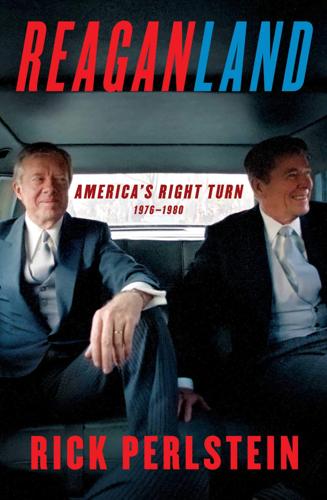
Reaganland: America's Right Turn 1976-1980
by
Rick Perlstein
Published 17 Aug 2020
At sixty-eight years old, any gaffe, any utterance too far out in right field, any wire-service photo of him falling asleep at some interminable Republican banquet, would be all it would take to finish him. That, said the conventional wisdom, was when the superhero known as “Big John” would swoop in to save the day. * * * JOHN BOWDEN CONNALLY JR. WAS born on a tenant farm in stark and unforgiving South Texas, in a house with neither indoor plumbing nor electricity. The soap was fashioned at home from lye and bacon crackling. His mother cooked on the woodstove that also heated the house. Connally was his parents’ second son. Their first burned to death after falling into that stove. Politicians, of course, love to recite stories of hardscrabble beginnings.

1,000 Places to See in the United States and Canada Before You Die, Updated Ed.
by
Patricia Schultz
Published 13 May 2007
Sure, a few chain motels line the outskirts of town, but why stay there when you can flop in a once dilapidated sharecropper’s quarters at the Shack Up Inn? Located on Hopson Plantation, the former farming enterprise is now home to an isolated rural “B ’n’ B”—bed and beer. A row of shacks (now with indoor plumbing and air-conditioning) are a big draw for blues tourists who embrace the funky rusticity of the place. Another atmospheric option is the old Riverside Hotel, a no-frills ranch house whose overnighters have included Ike Turner and the late blues fan John F. Kennedy Jr. A locally owned boardinghouse/budget hotel since 1944, the Riverside is notorious as the former hospital for blacks where pioneering blues singer Bessie Smith died in 1937, following a car crash on Highway 61.

Lonely Planet China (Travel Guide)
by
Lonely Planet
and
Shawn Low
Published 1 Apr 2015
Jinzhanghan Grasslands Set along a winding river about 40km north of Haila’er, this grassland camp (Jinzhanghan Caoyuan %133 2700 0919; hJun–early Oct) has a spectacular setting, even if it is designed for tourists. You can pass an hour or so looking around and sipping milk tea, spend the day horse riding (per hour ¥200) or hiking, or come for an evening of dinner, singing and dancing. If you want to stay the night, you can sleep in one of the yurts (per person ¥100). There’s no indoor plumbing, but there is a toilet hut. To get here, you’ll have to hire a taxi from Haila’er (about ¥300 return) or join one of the Chinese group tours (sign up at your hotel or at the booth at the Haila’er train station). About 2km before the main camp there are a couple of unsigned family-run camps. Prices for food, accommodation and horse rental are about half what you pay at Jinzhanghan, but they are rather less organised.